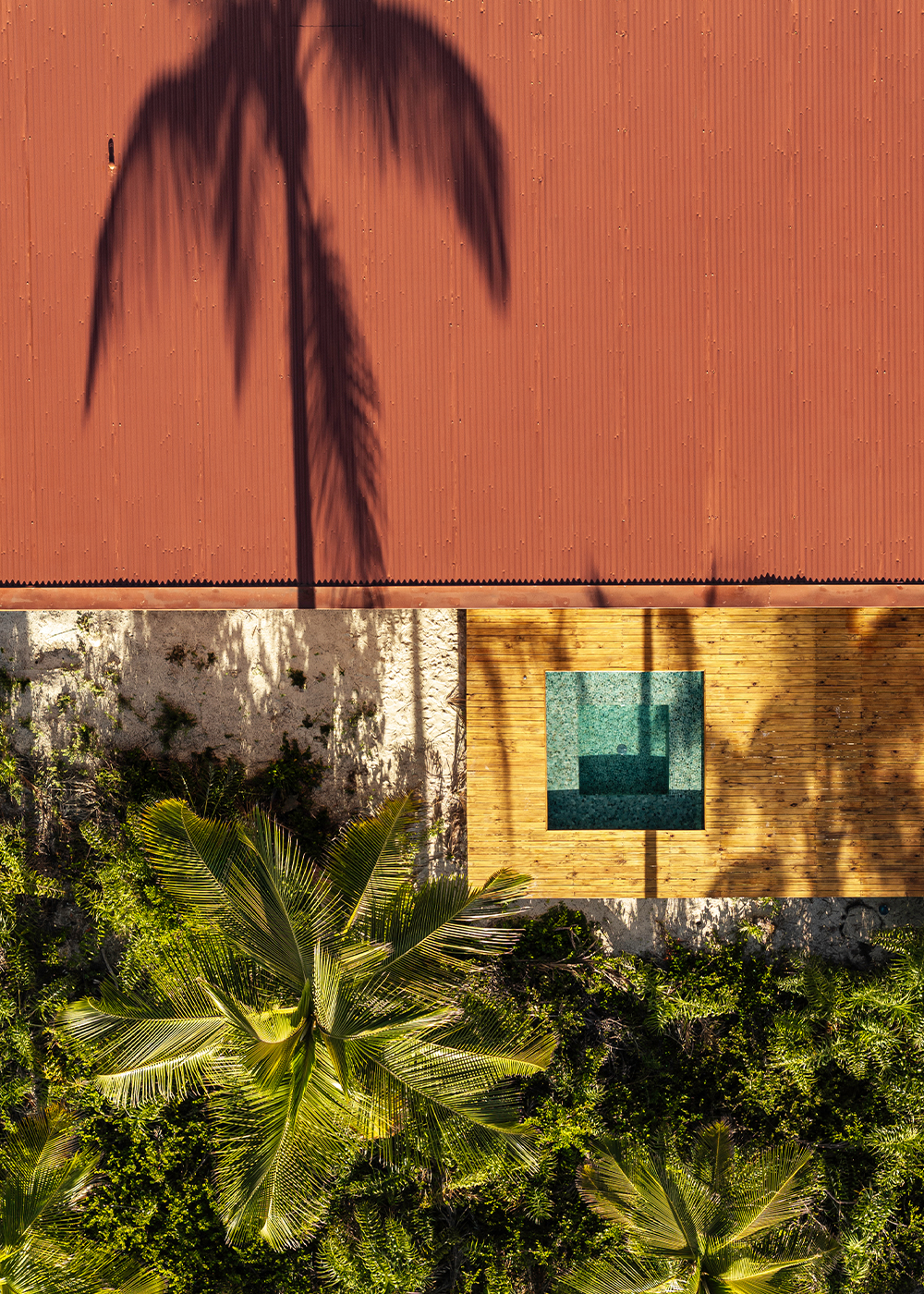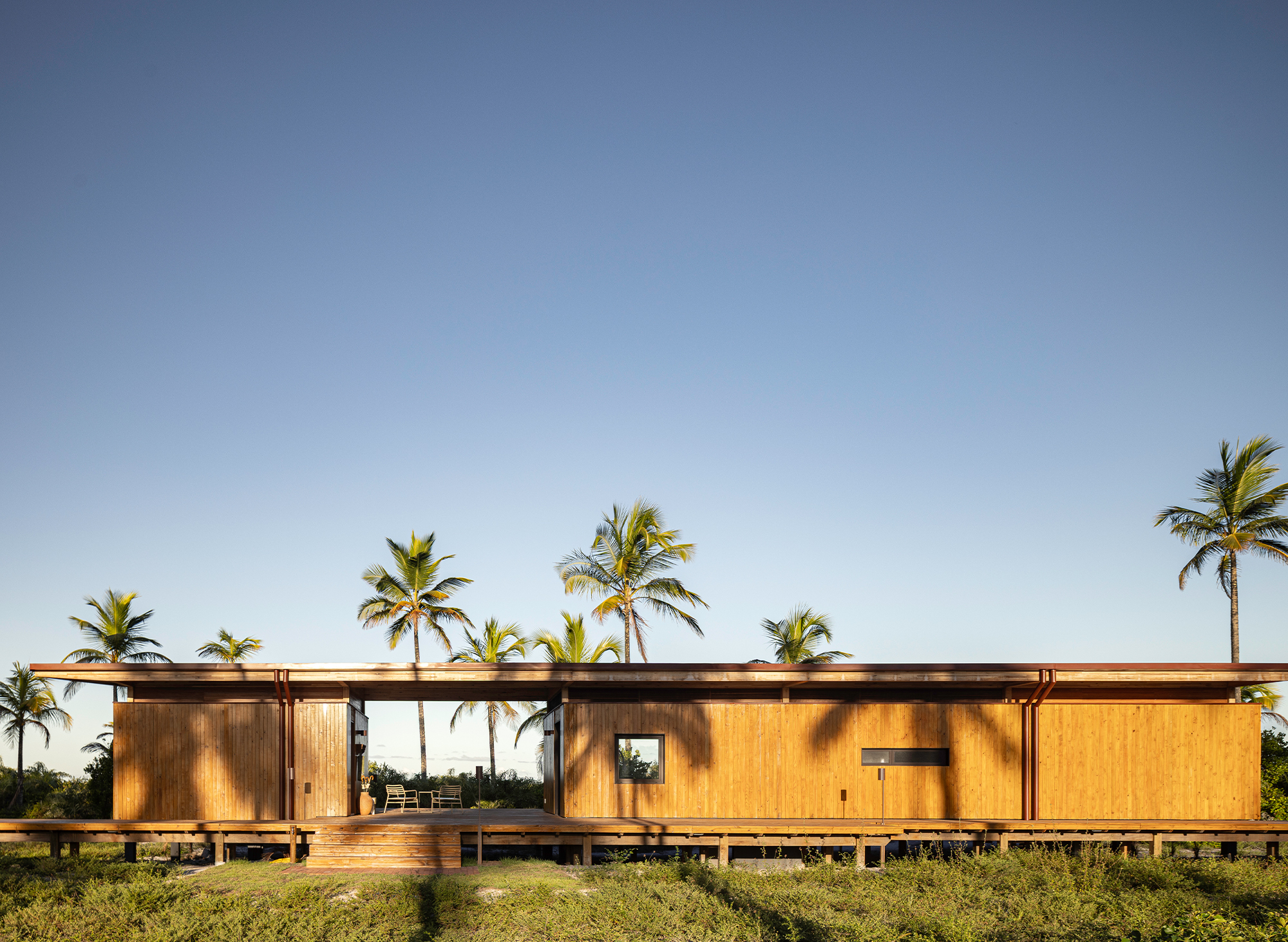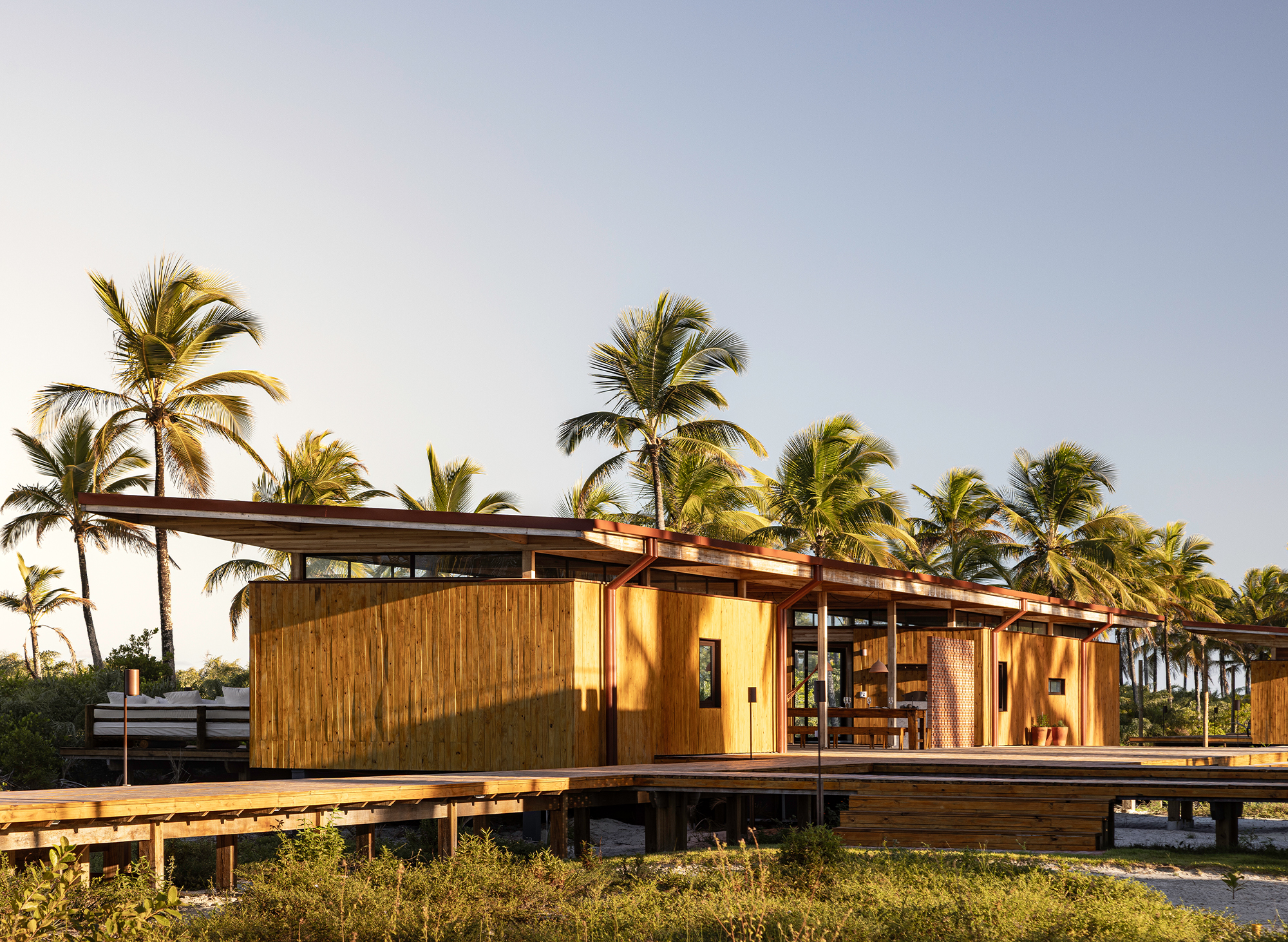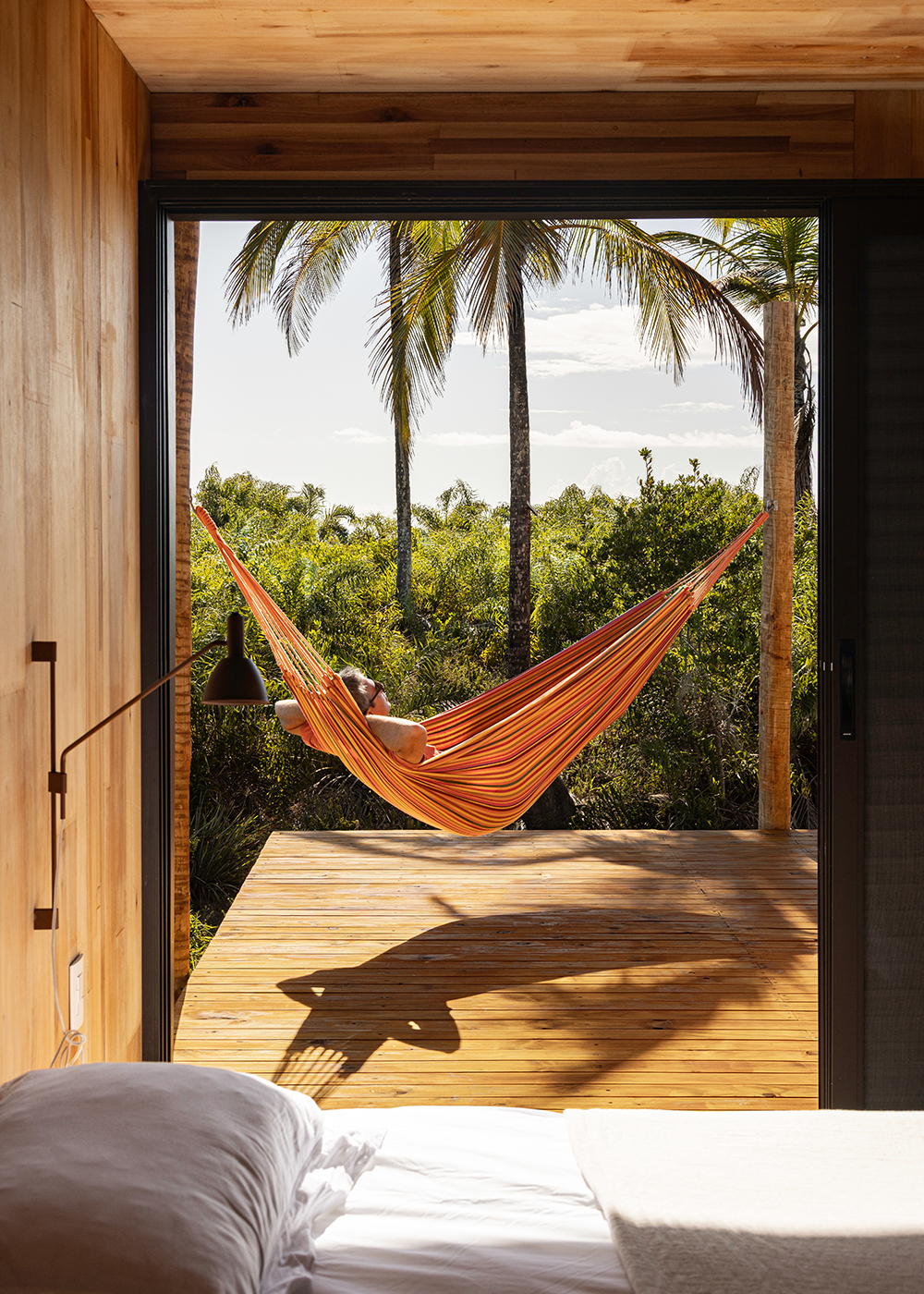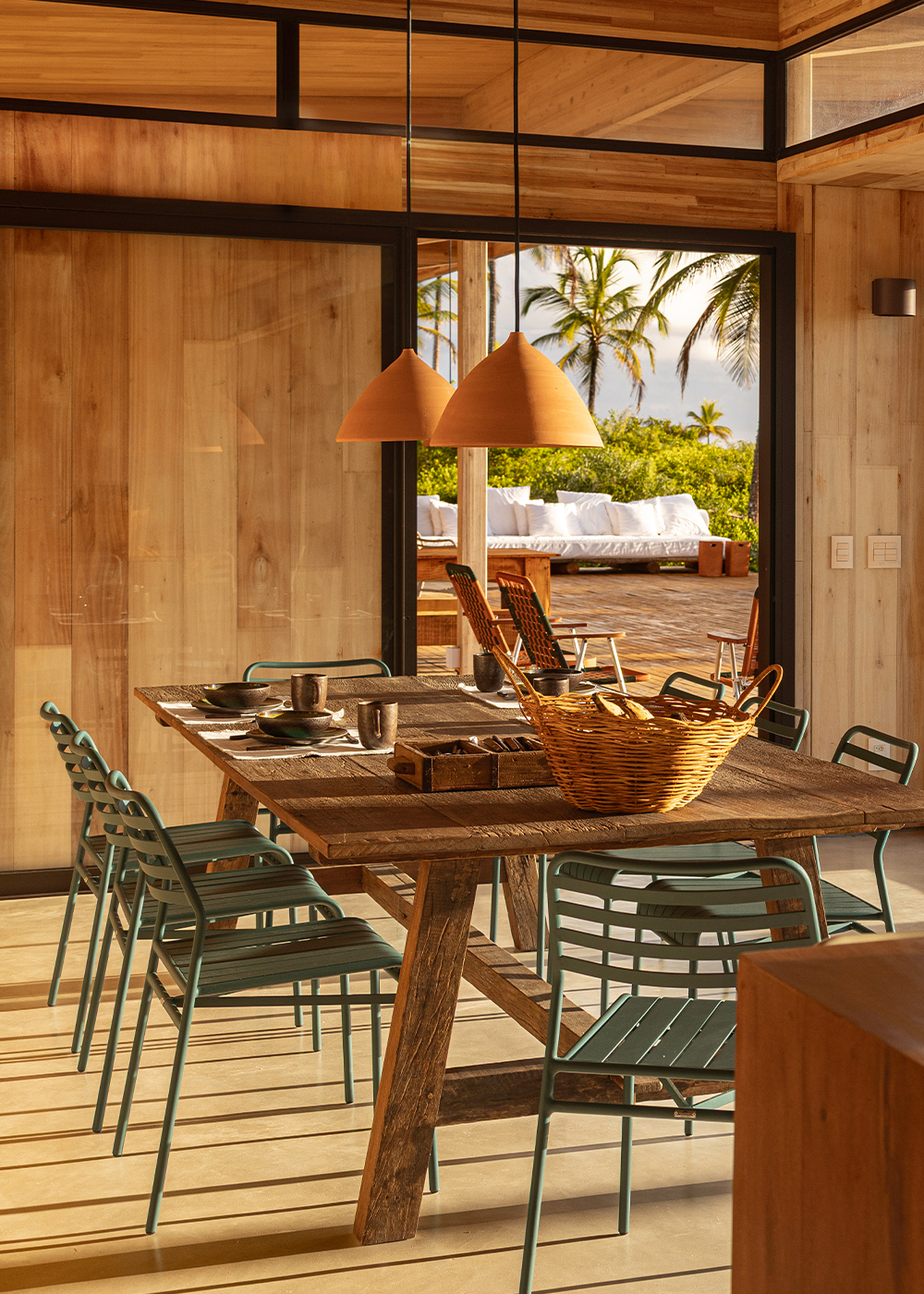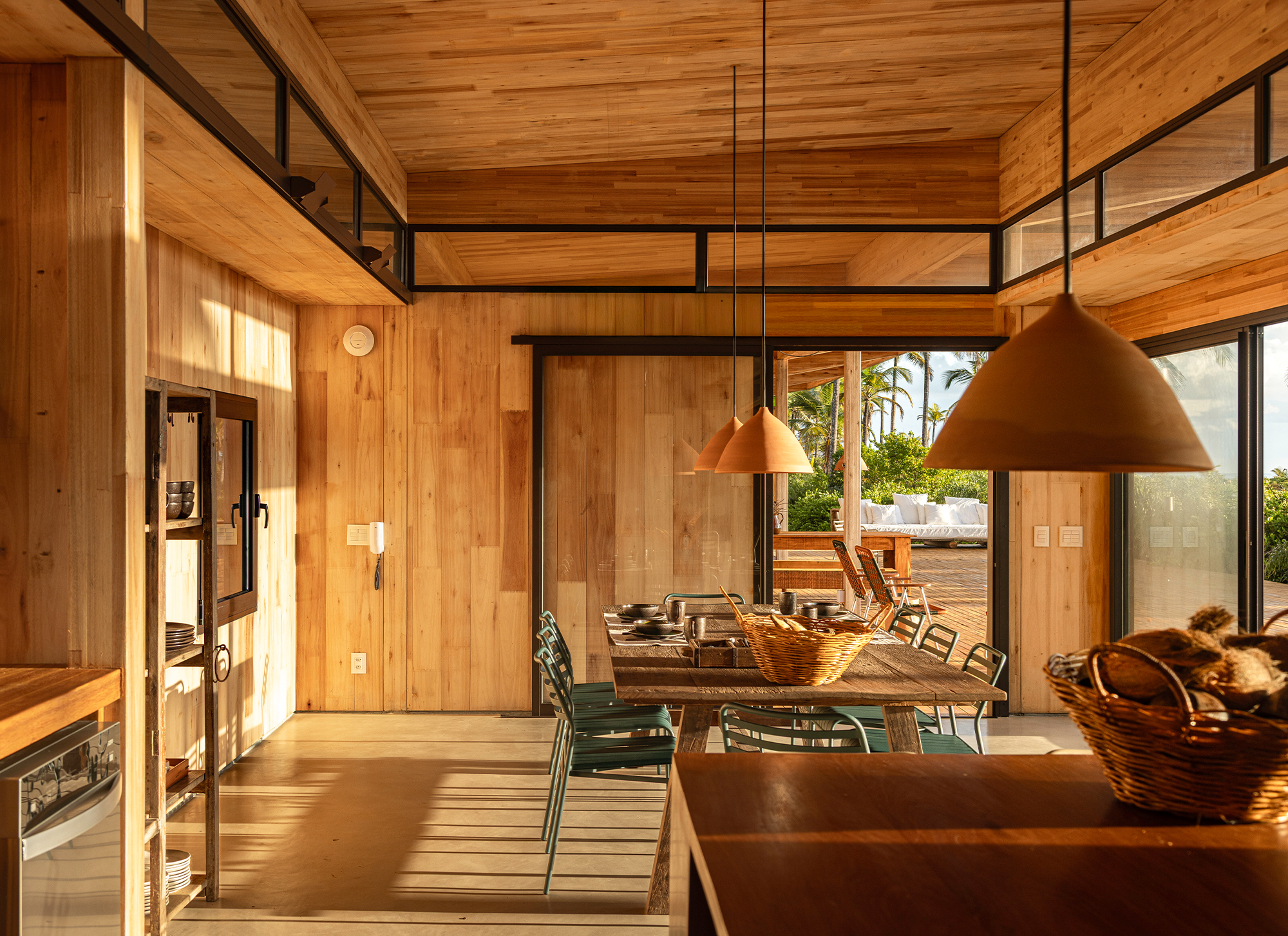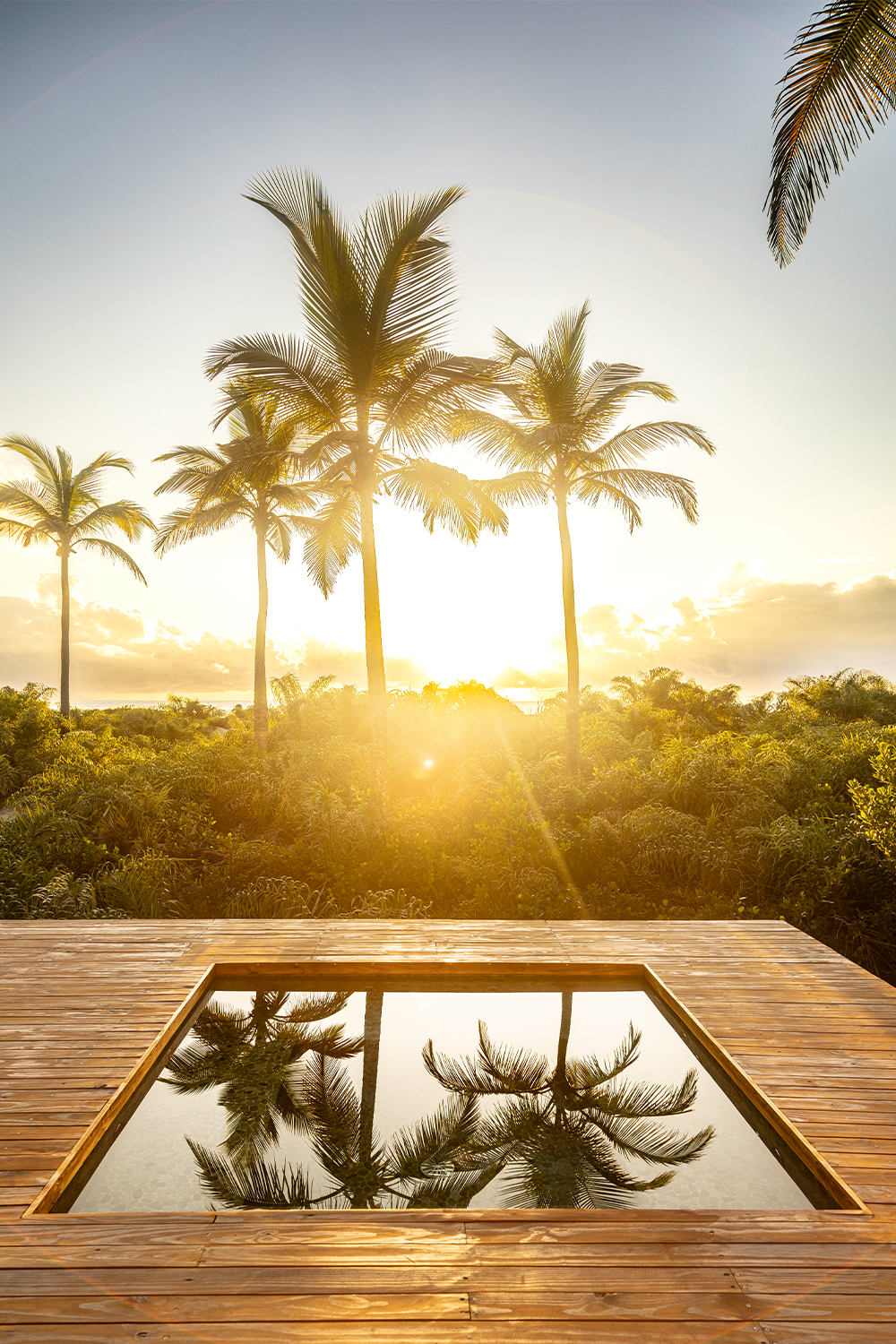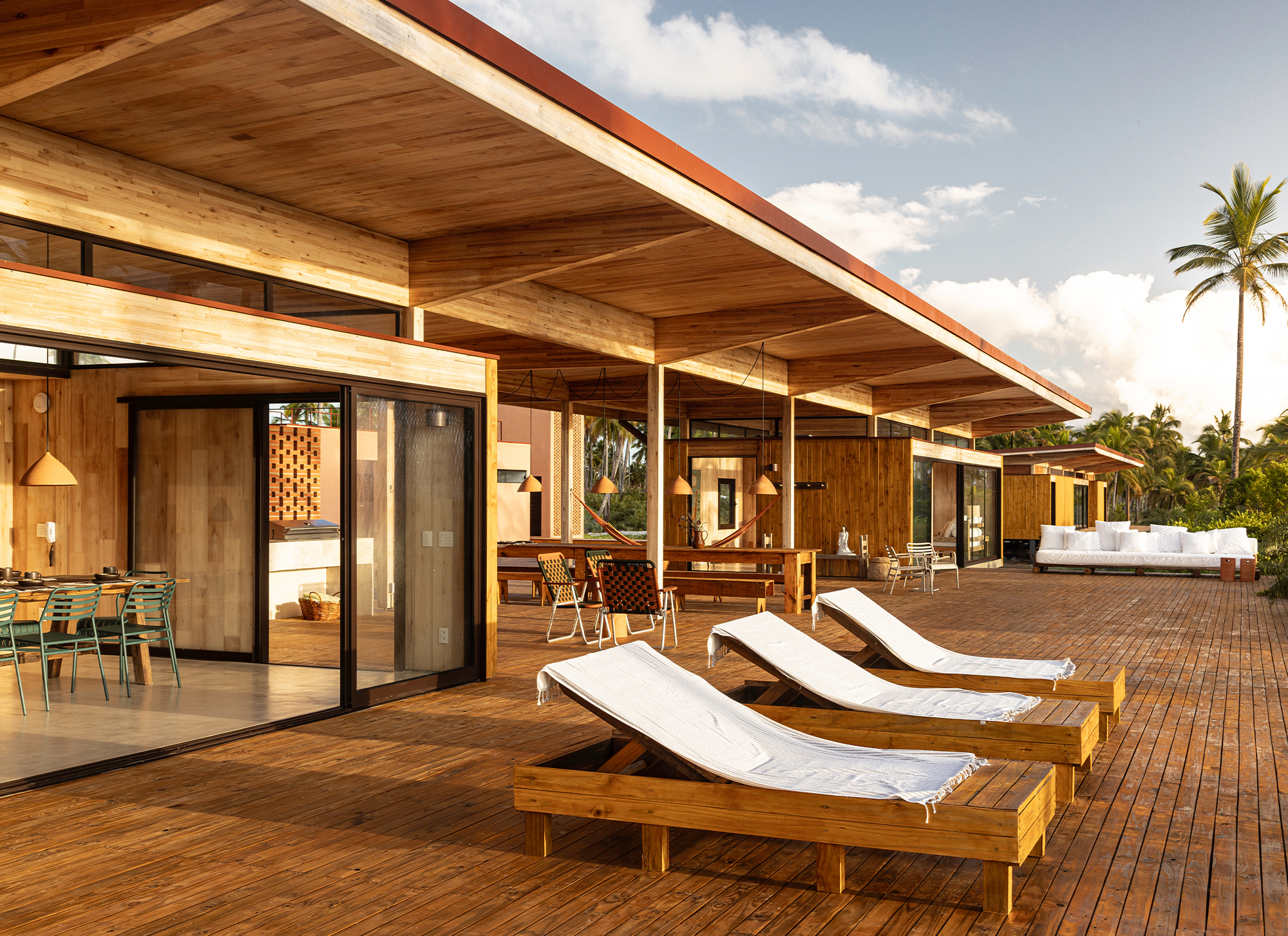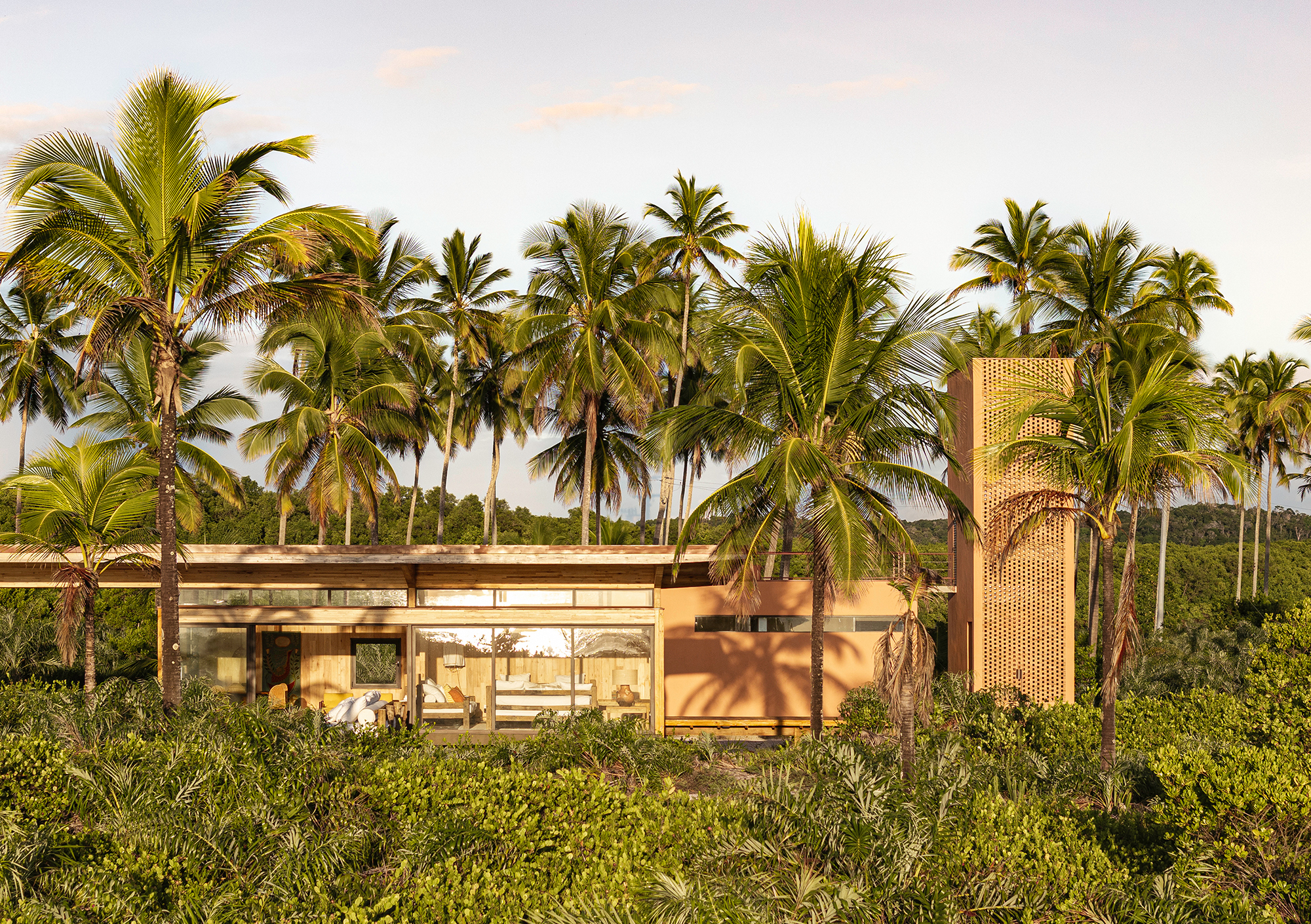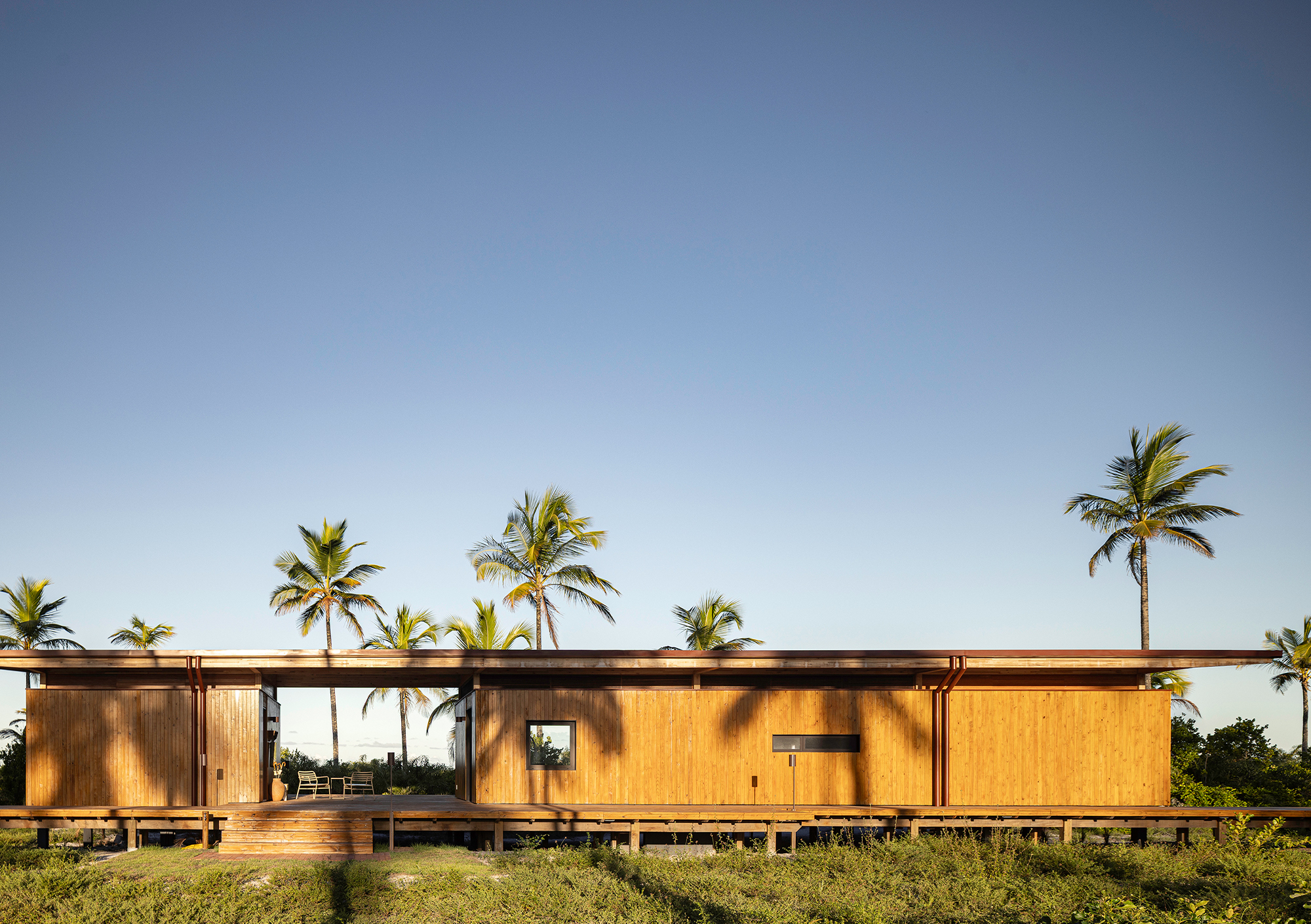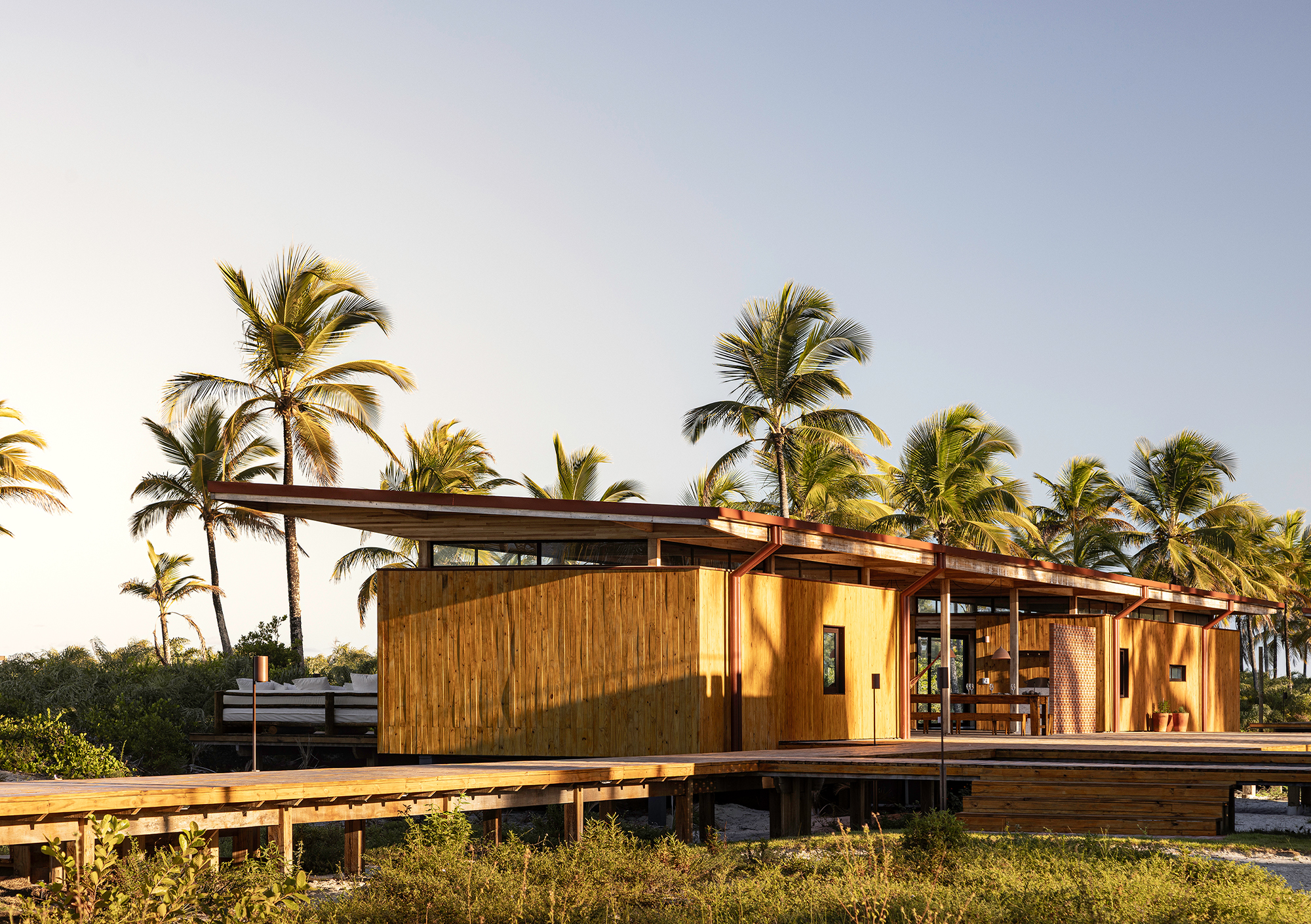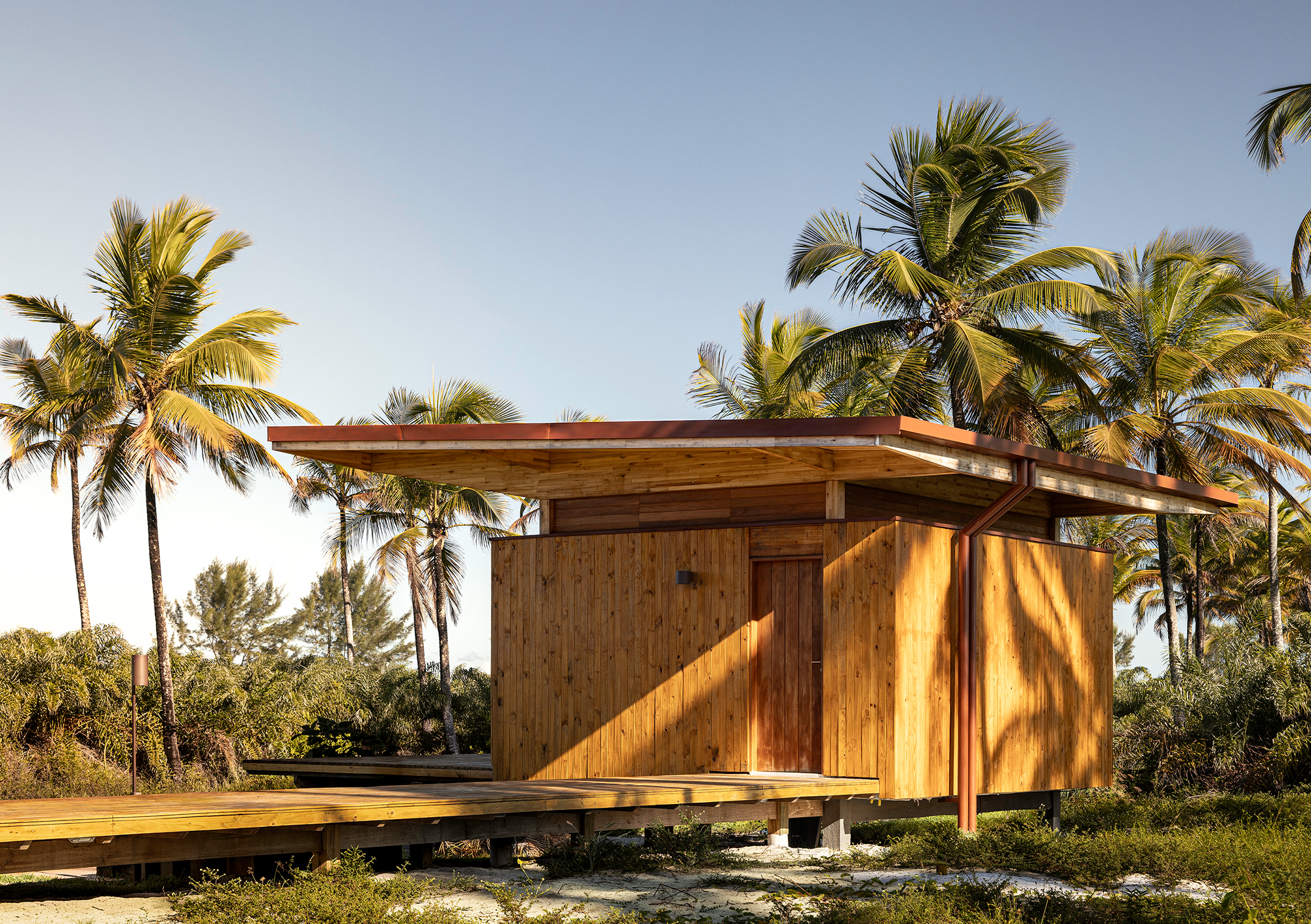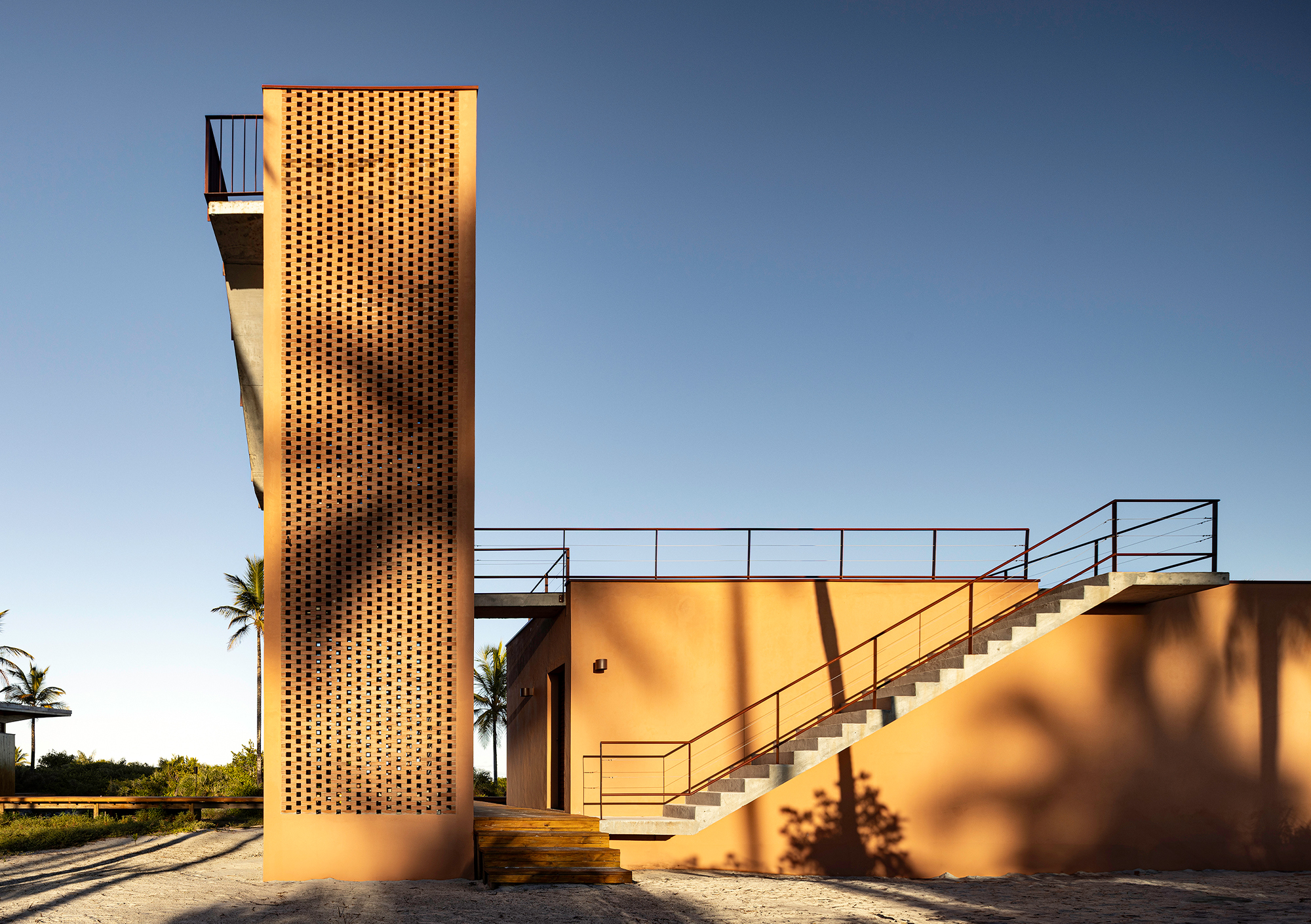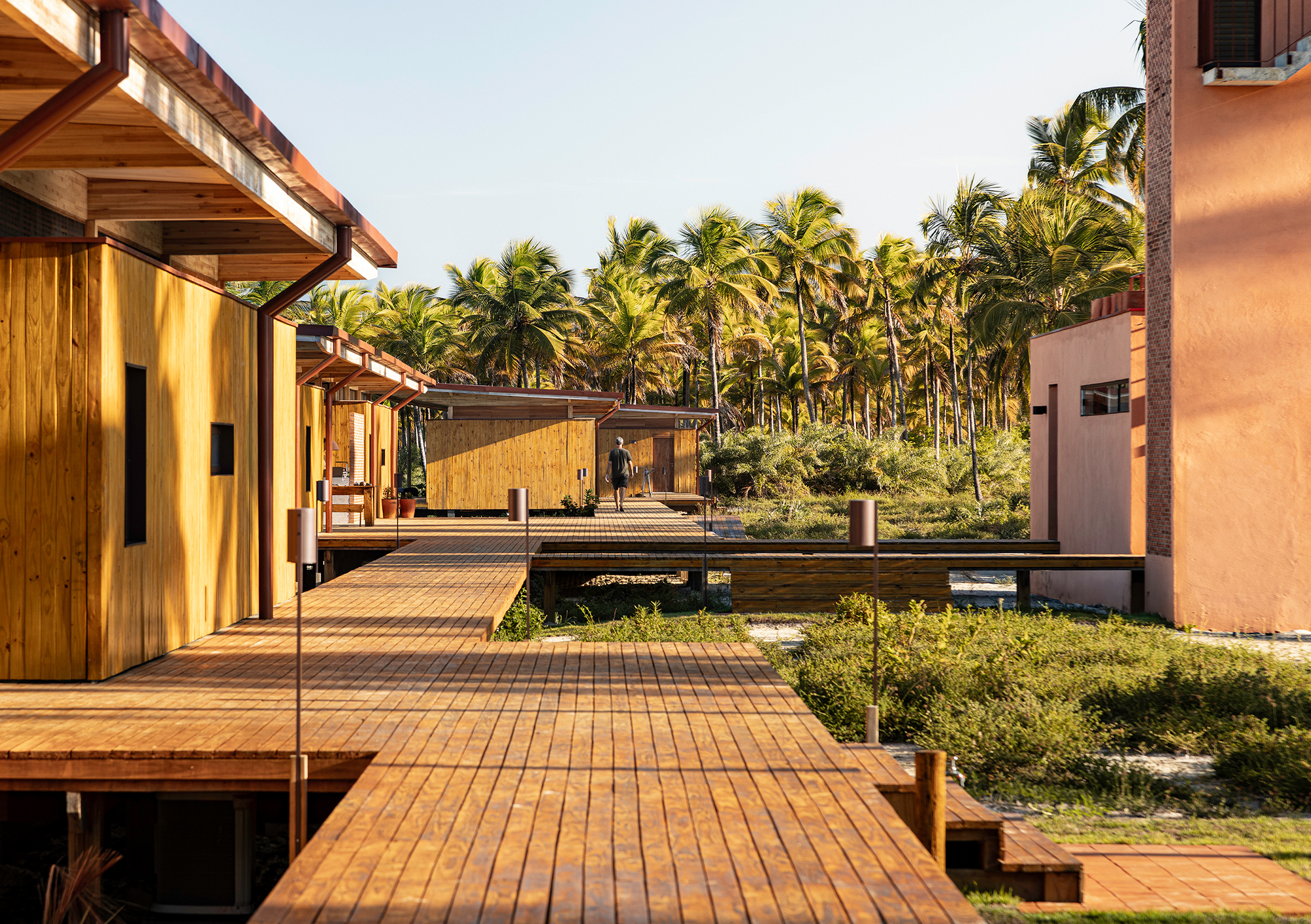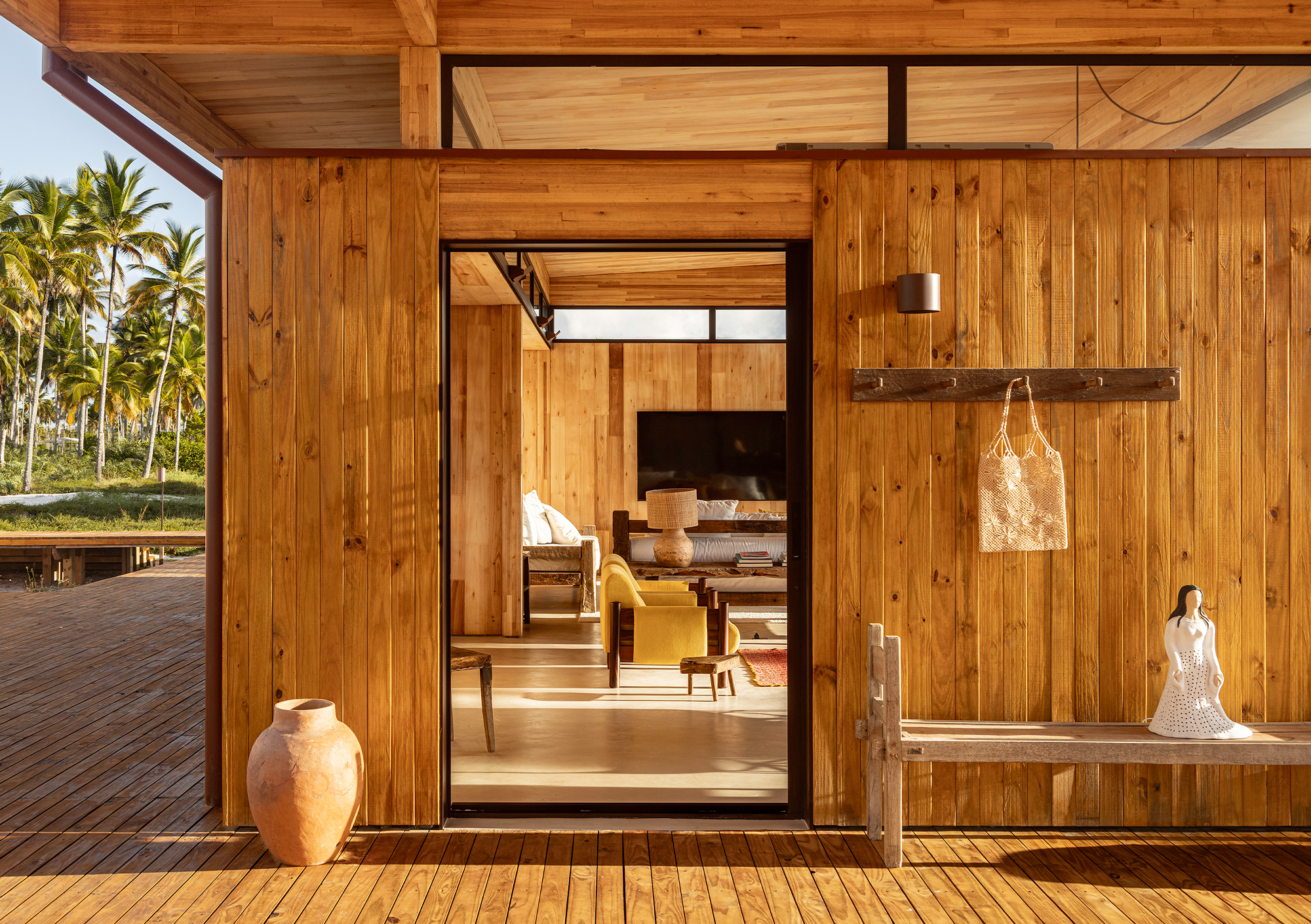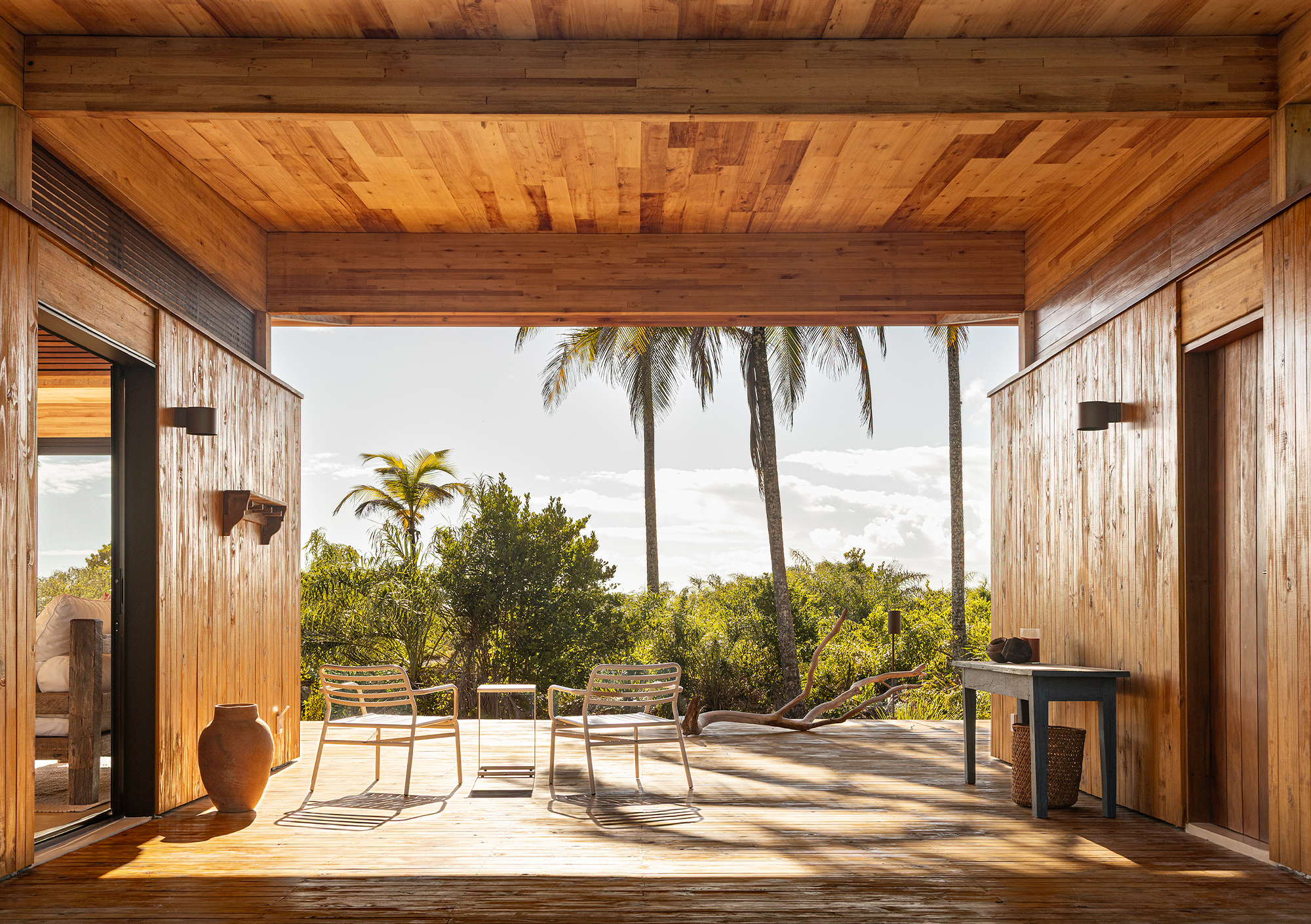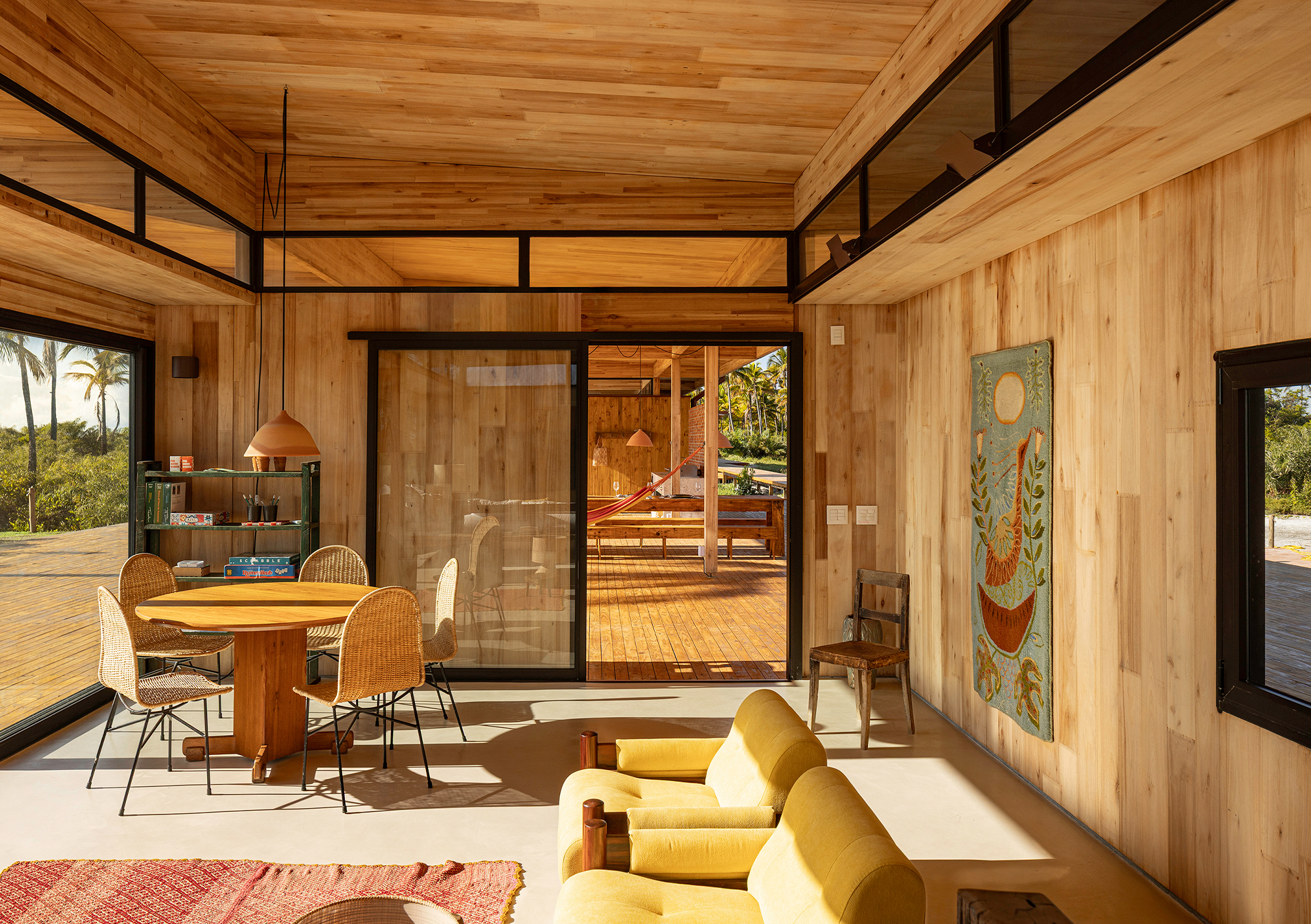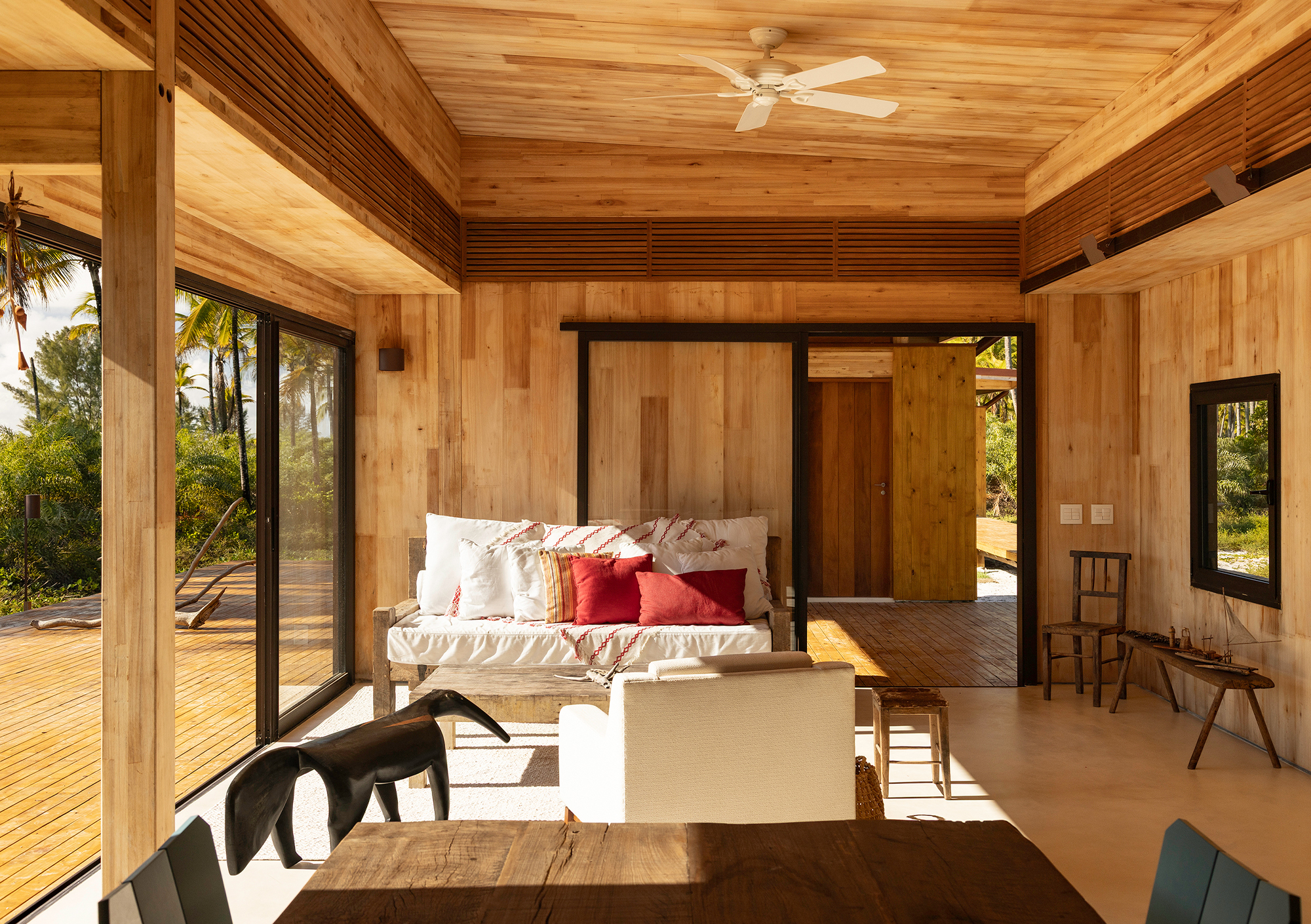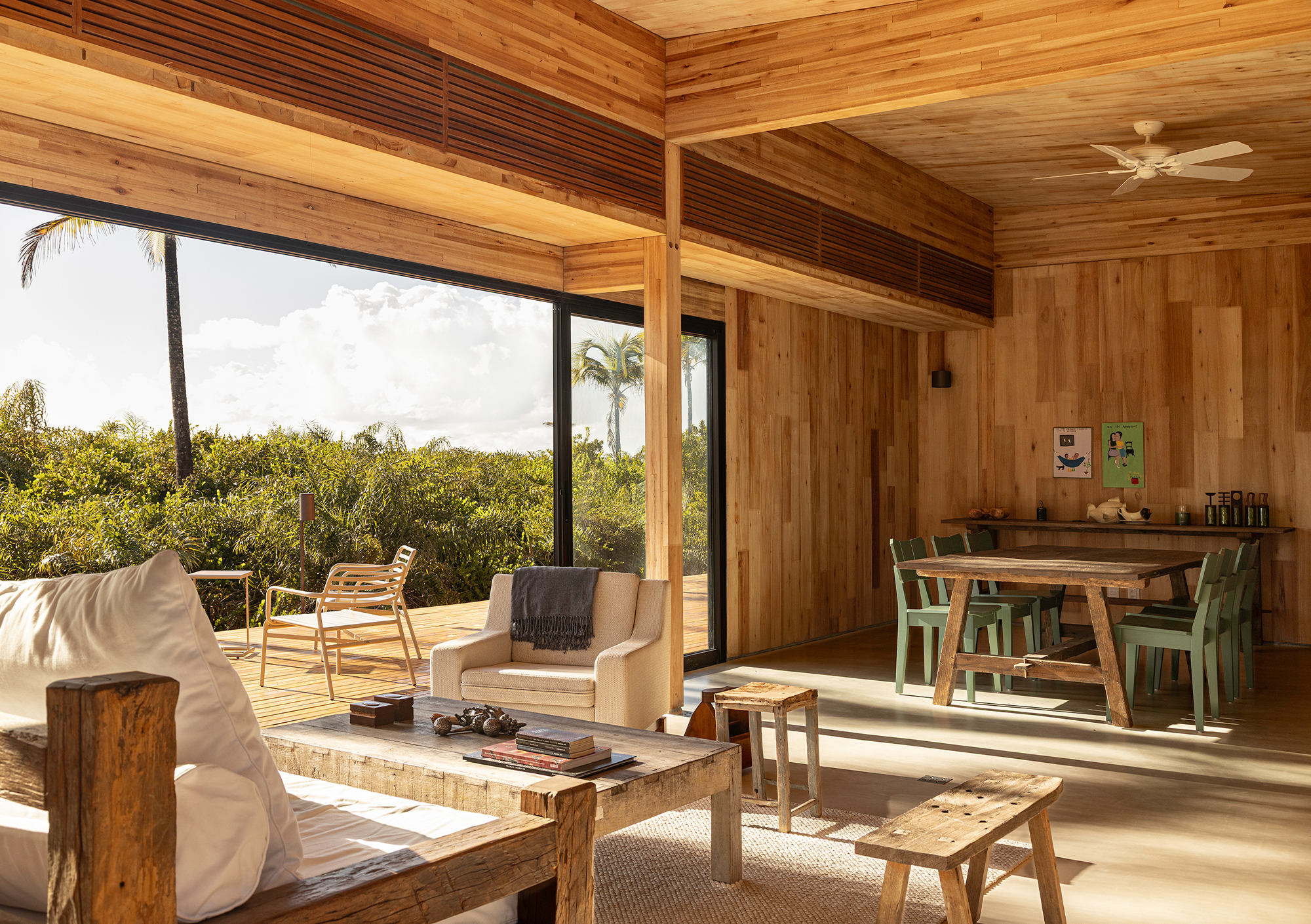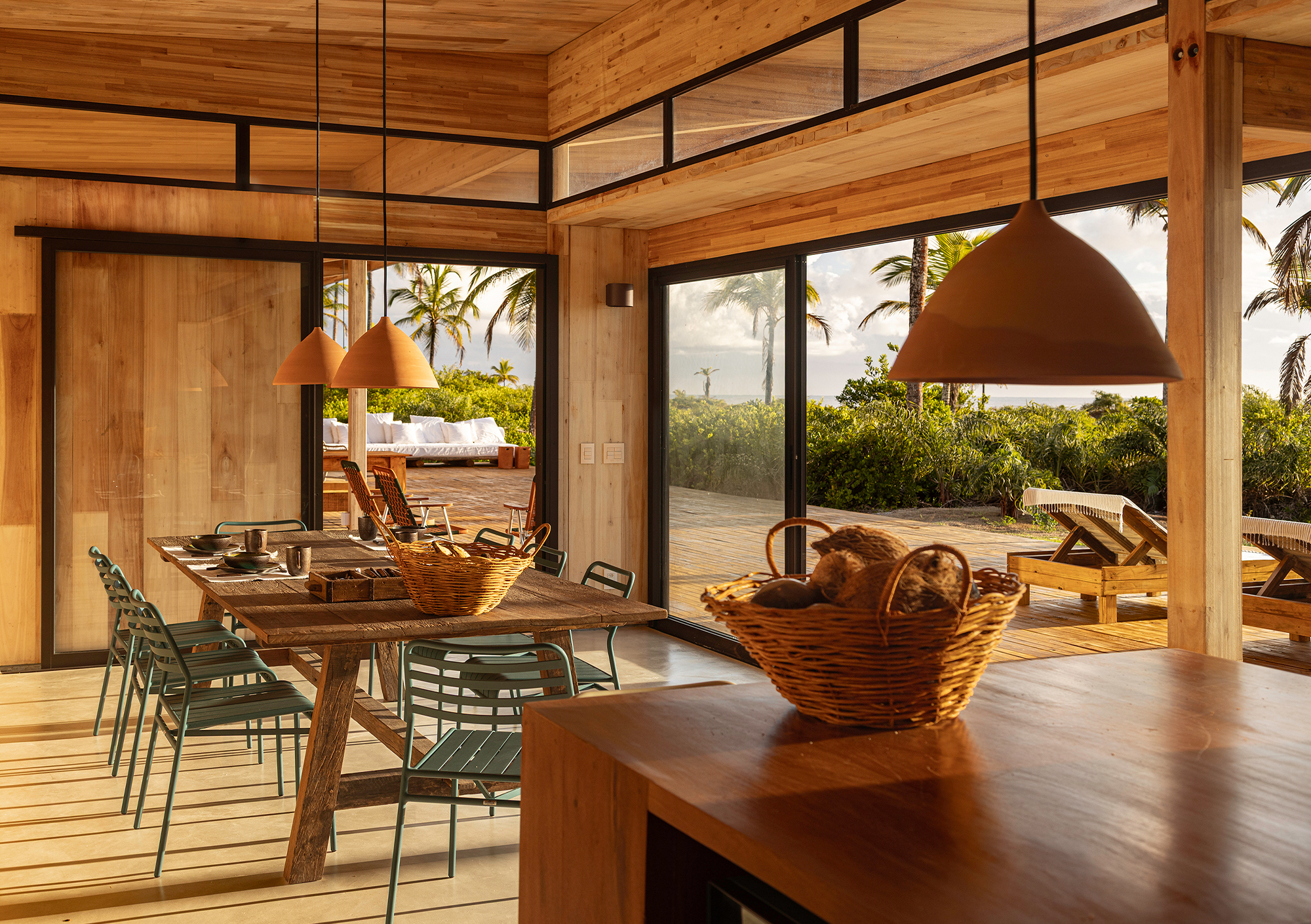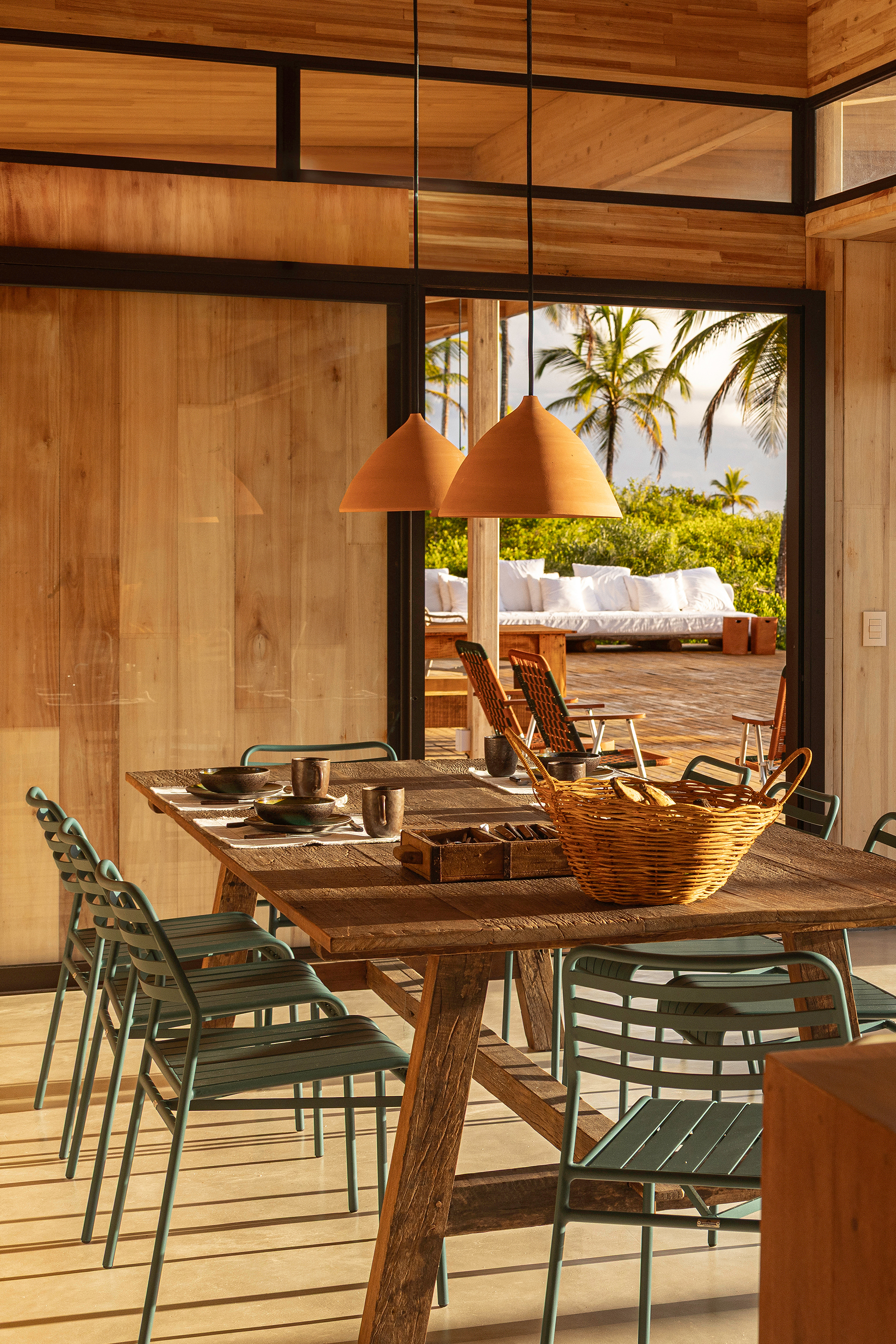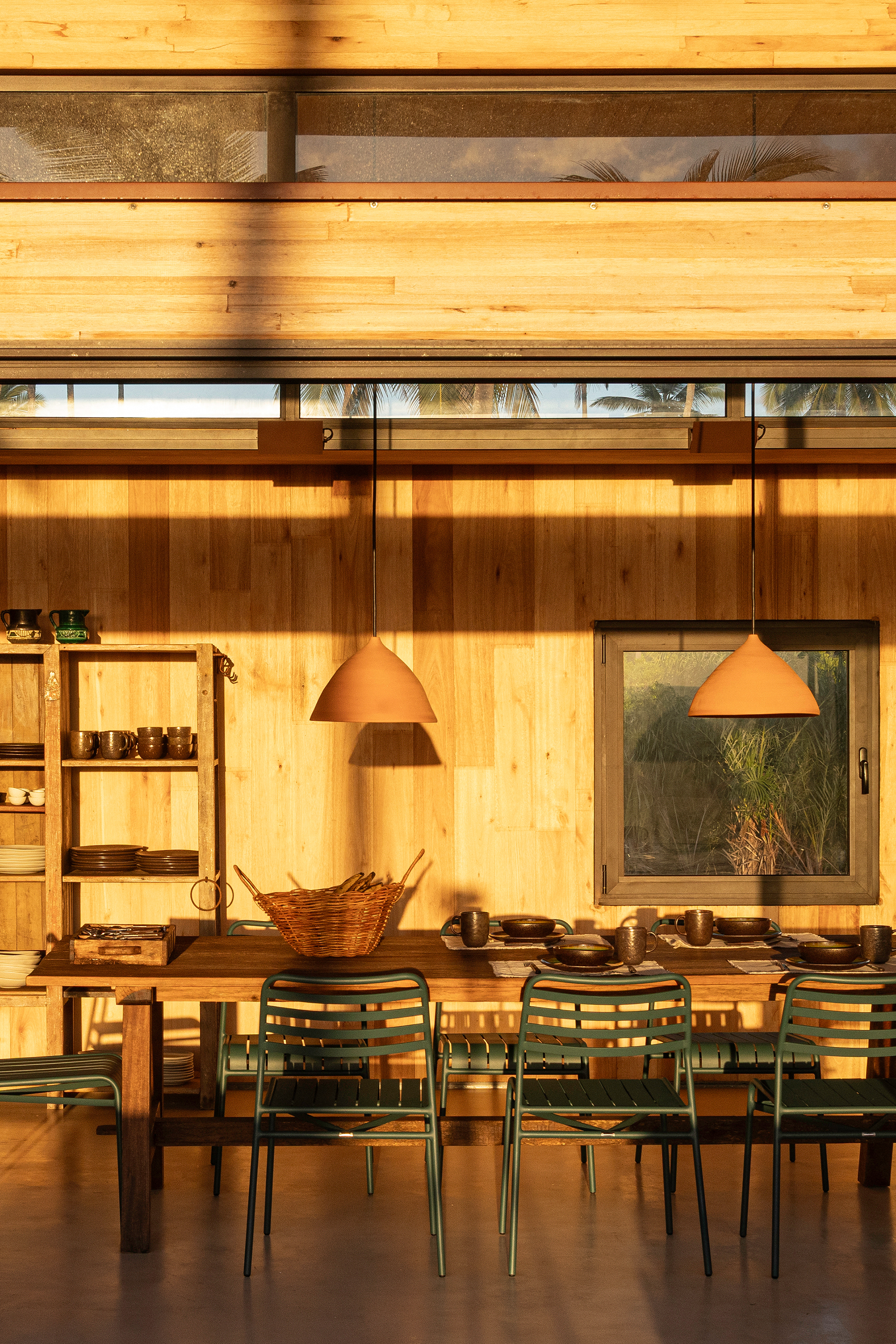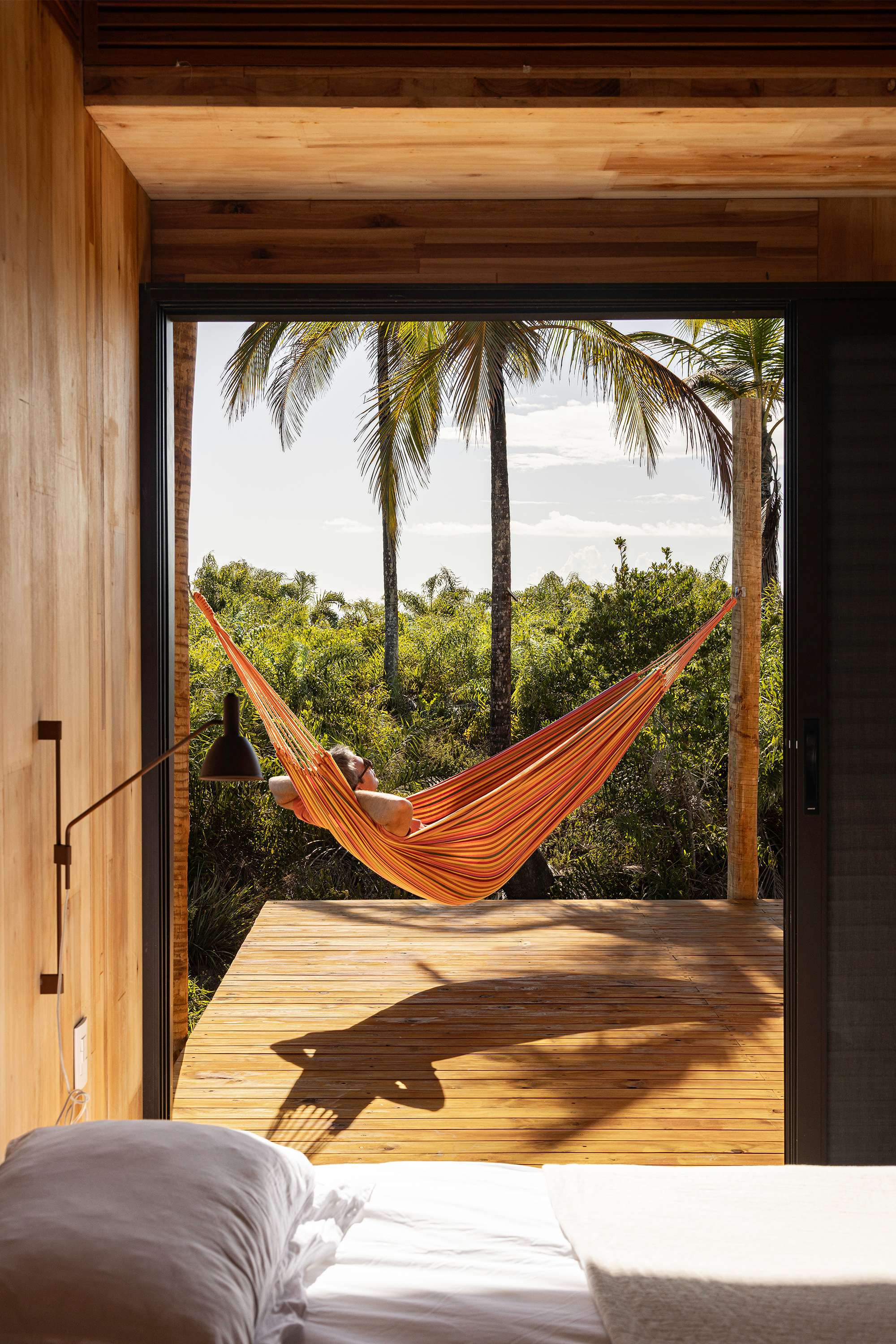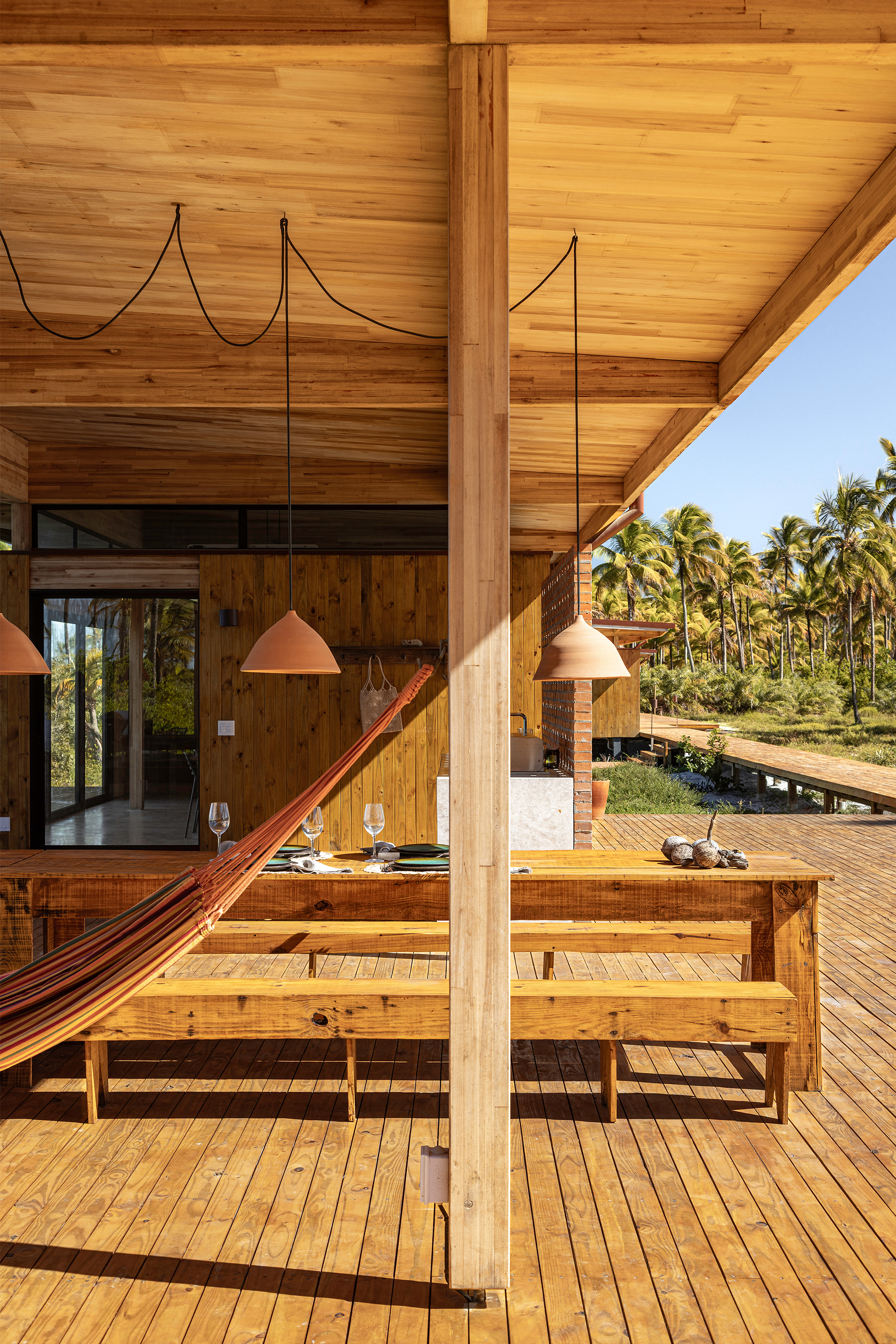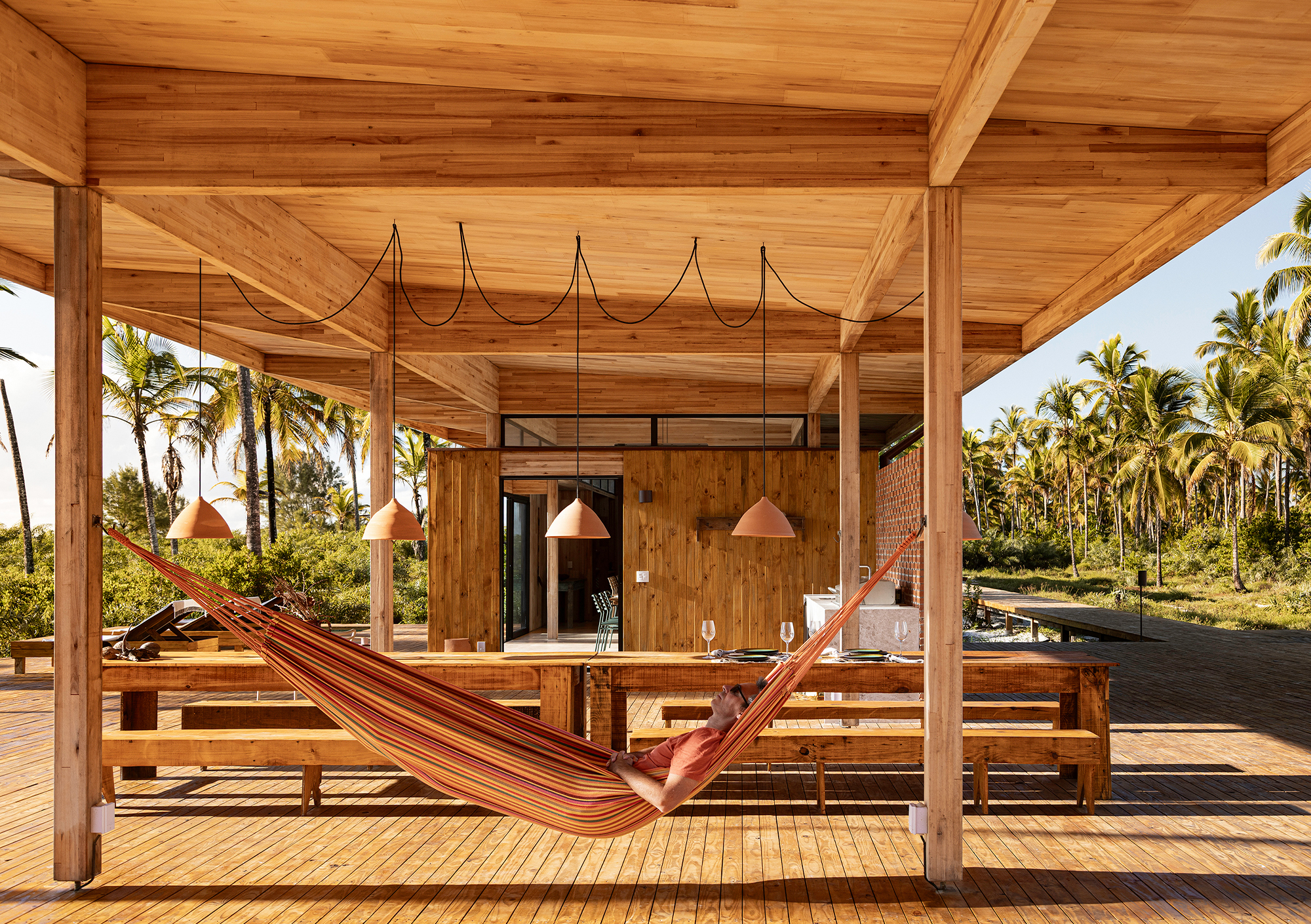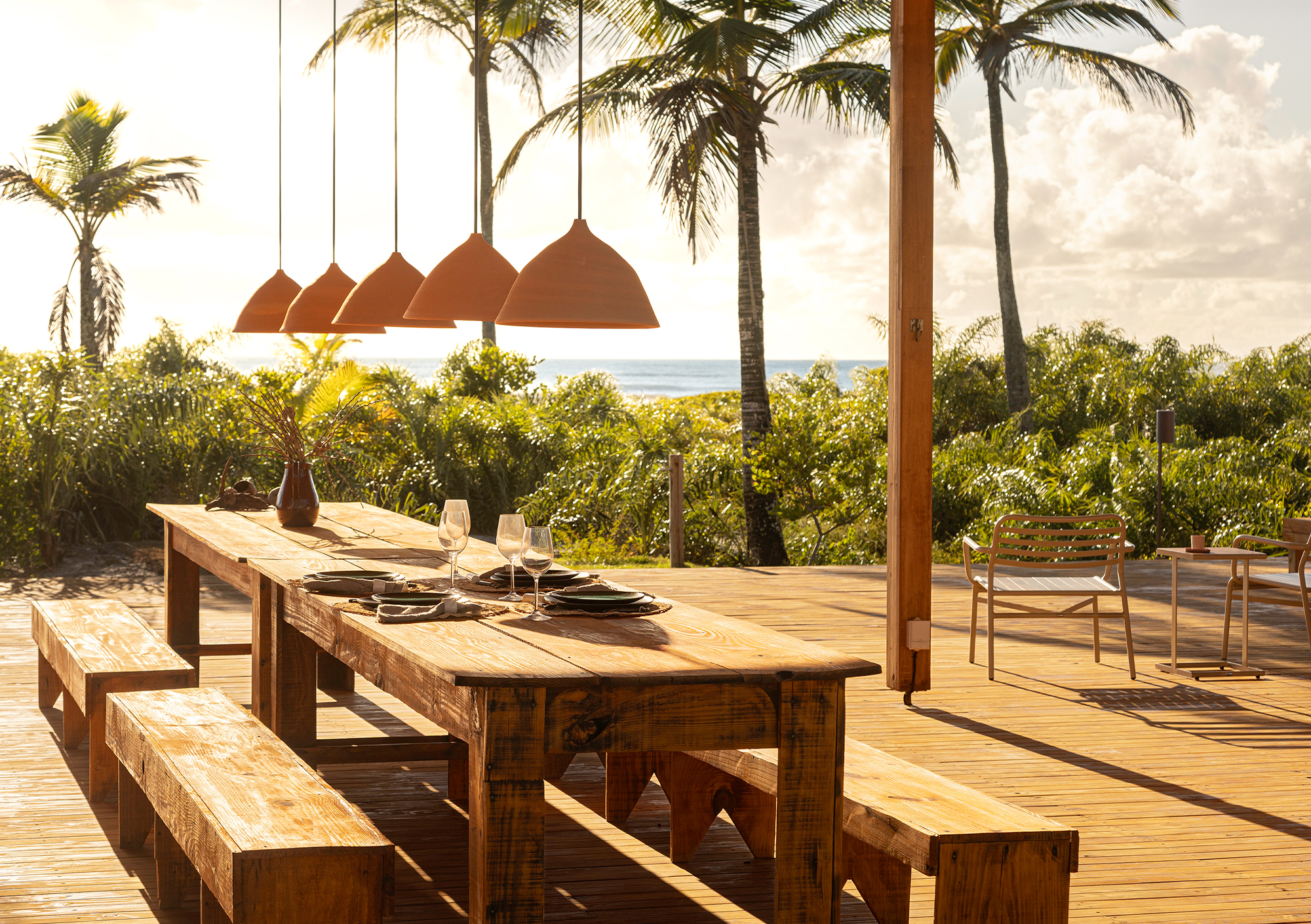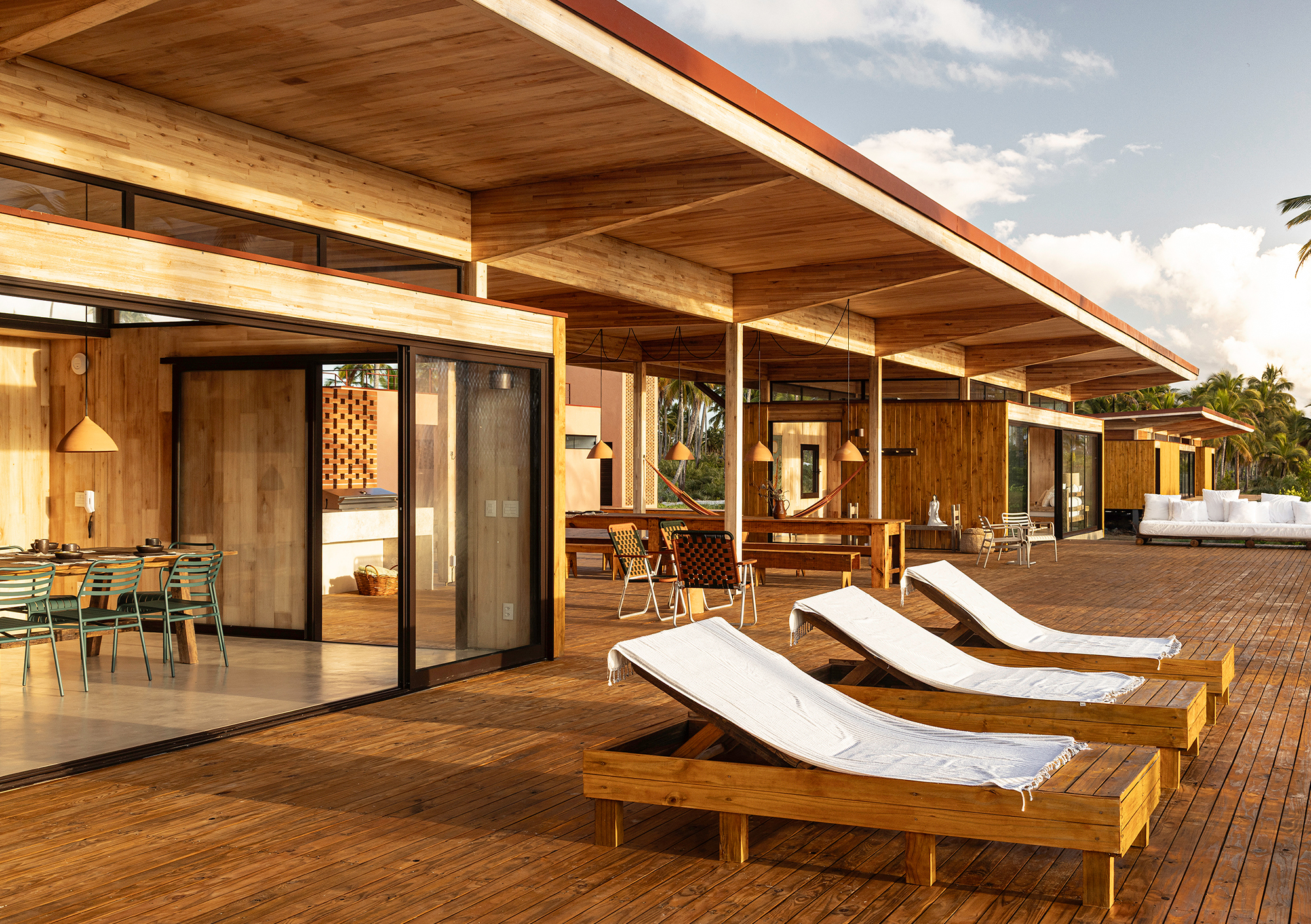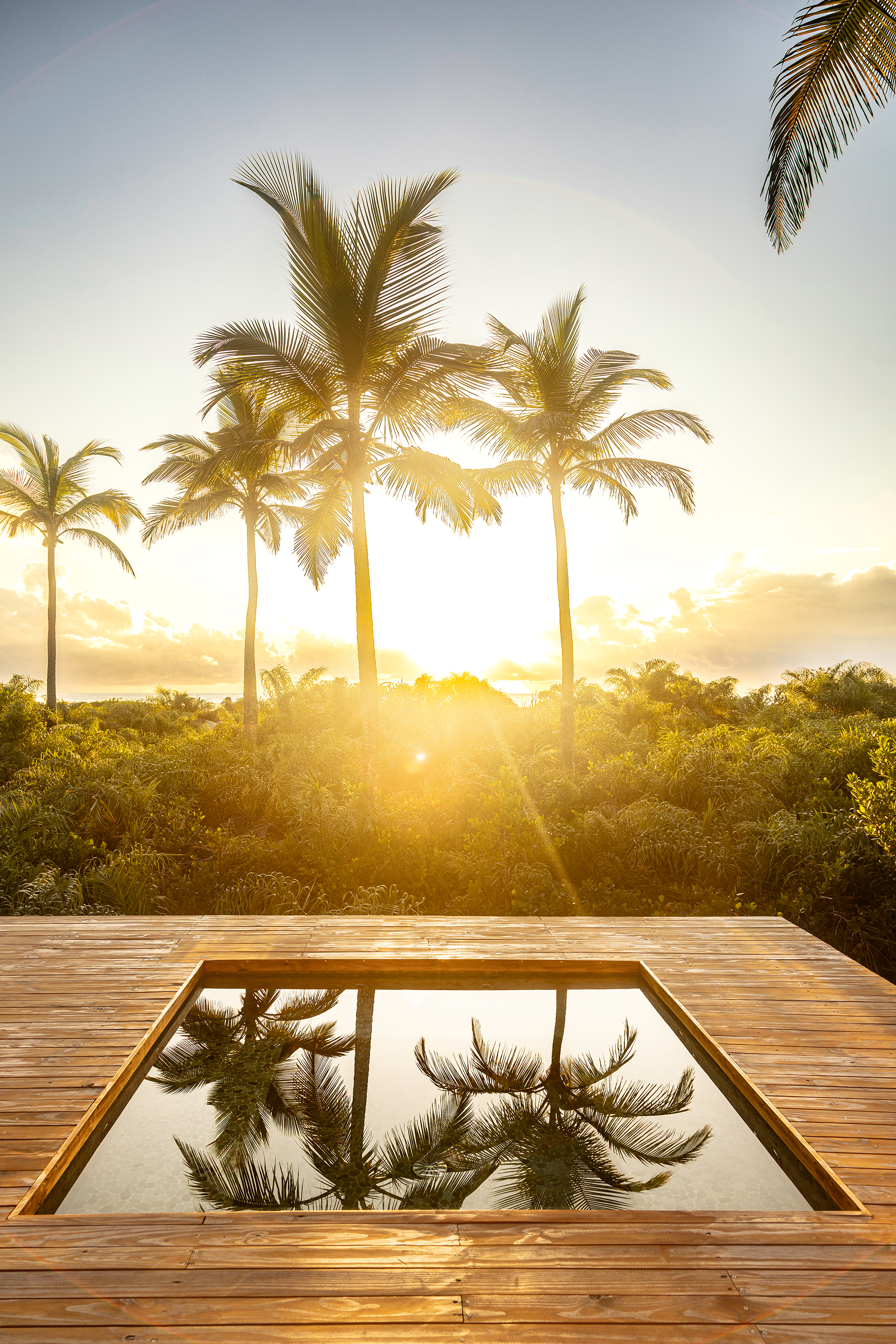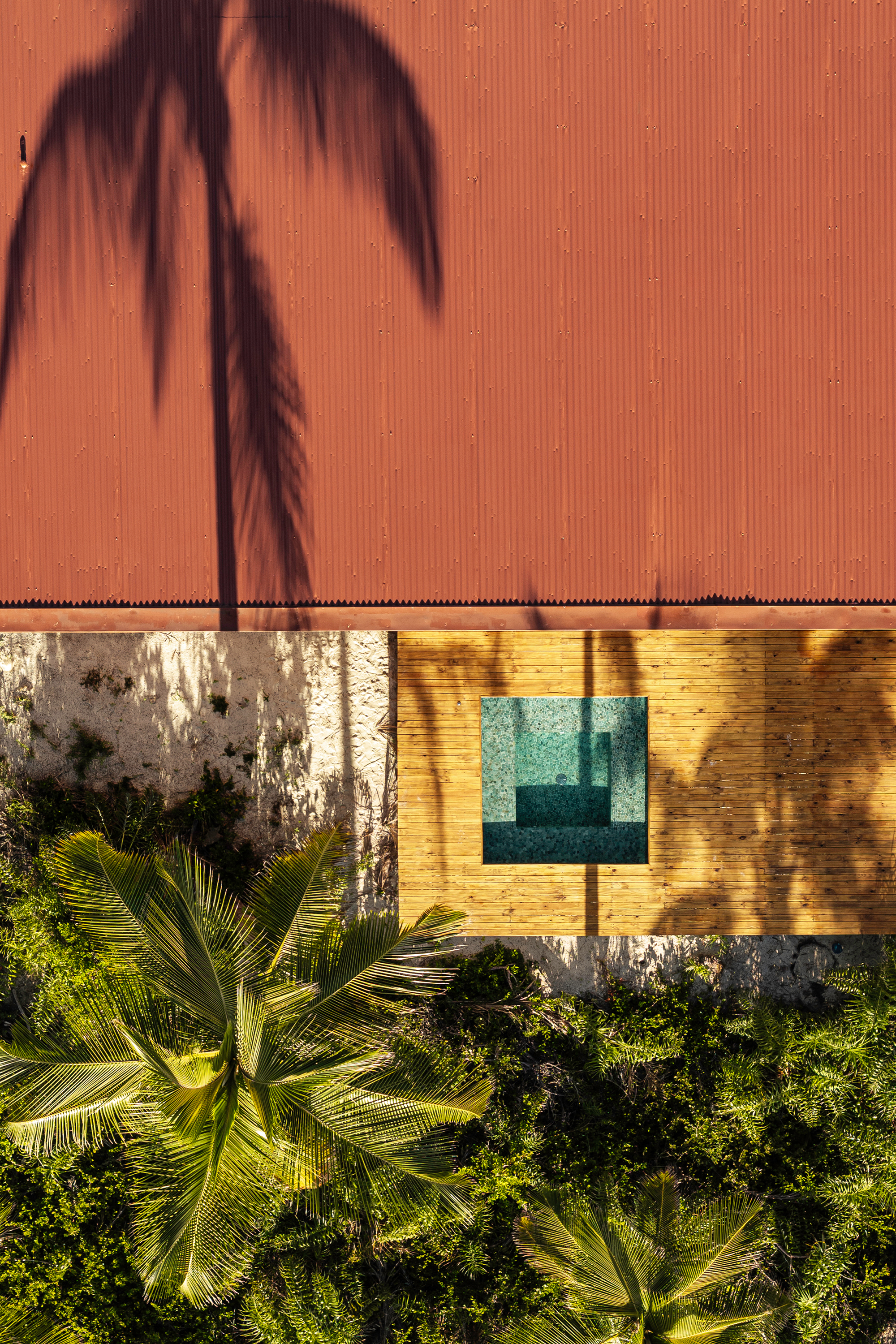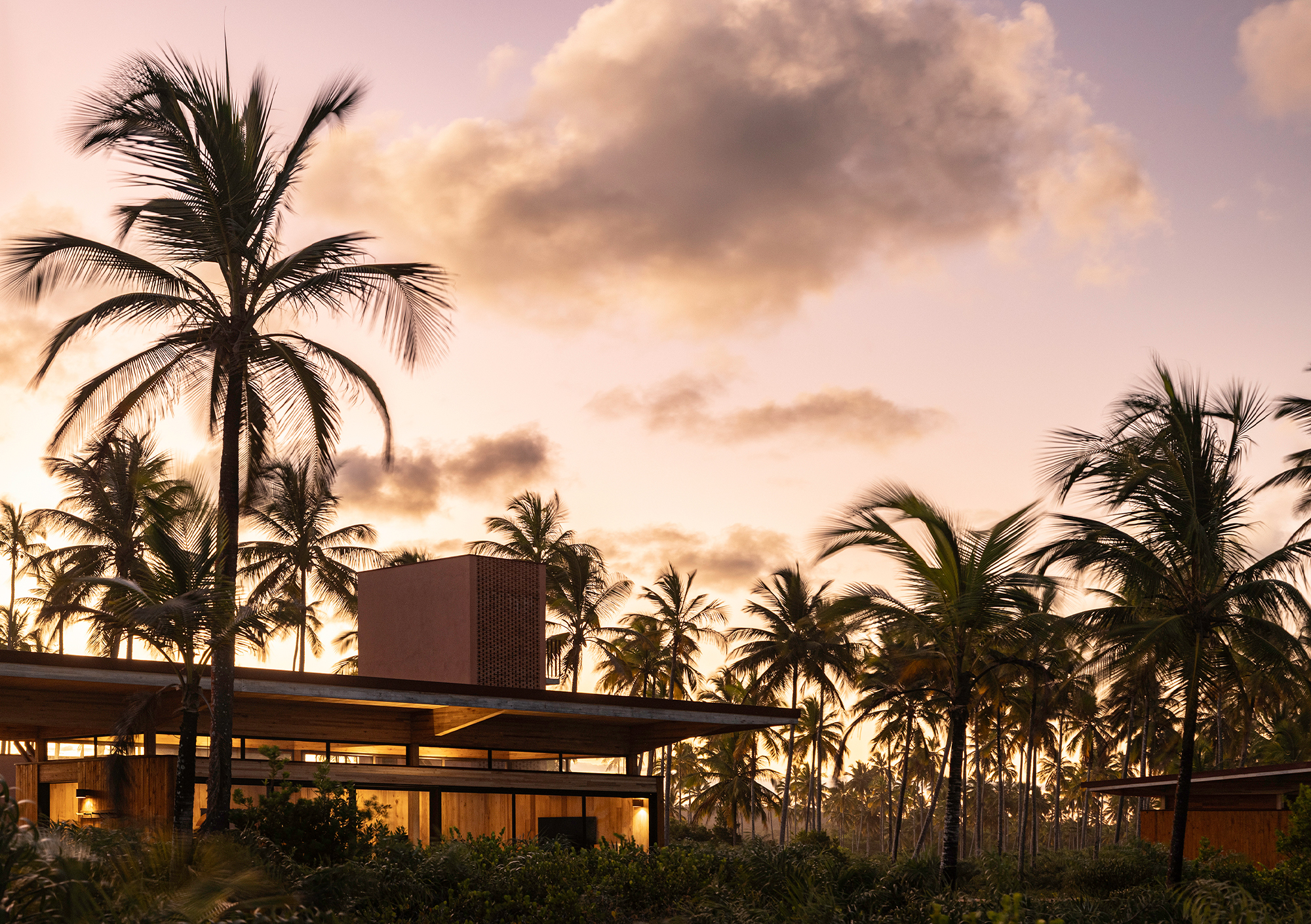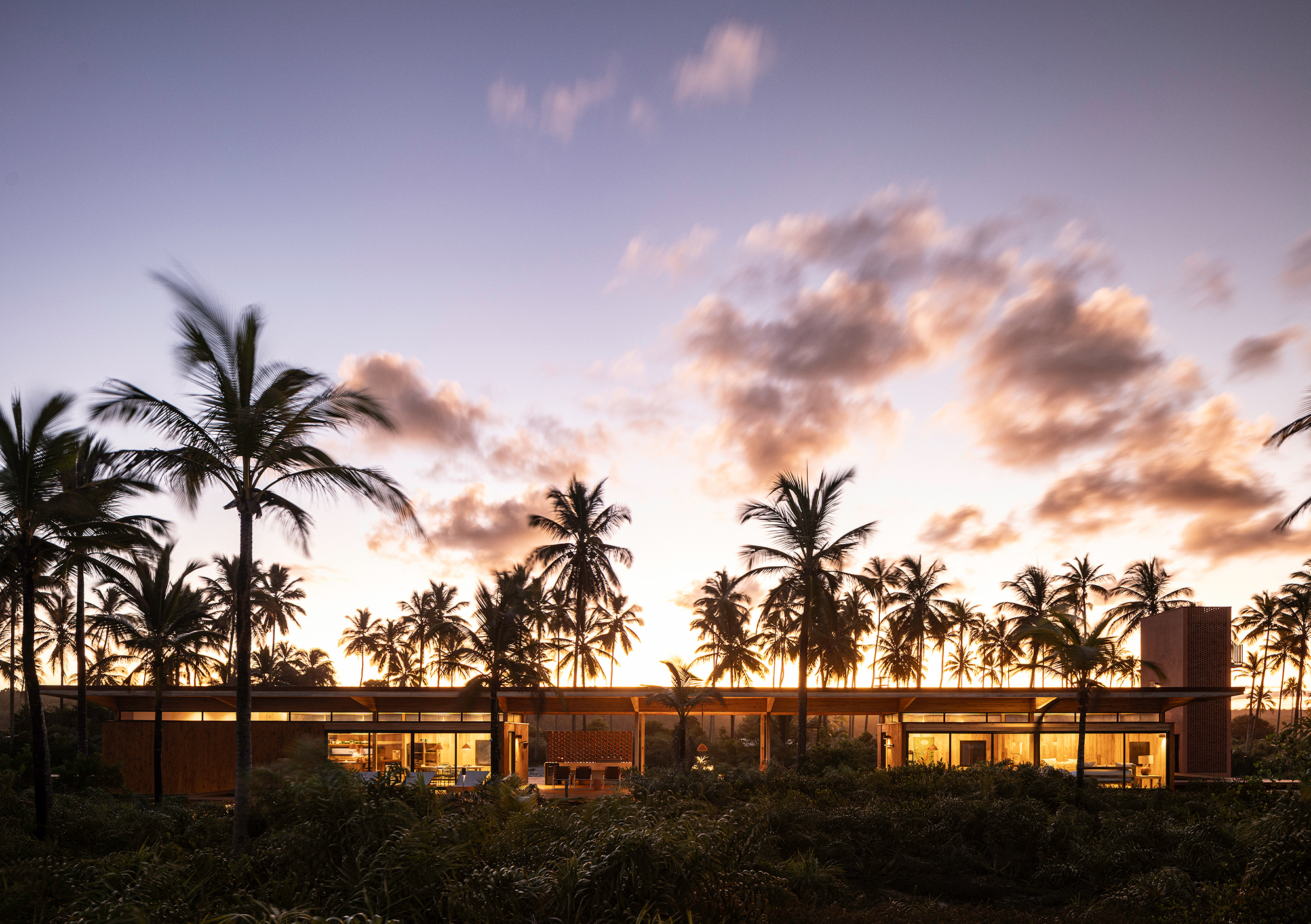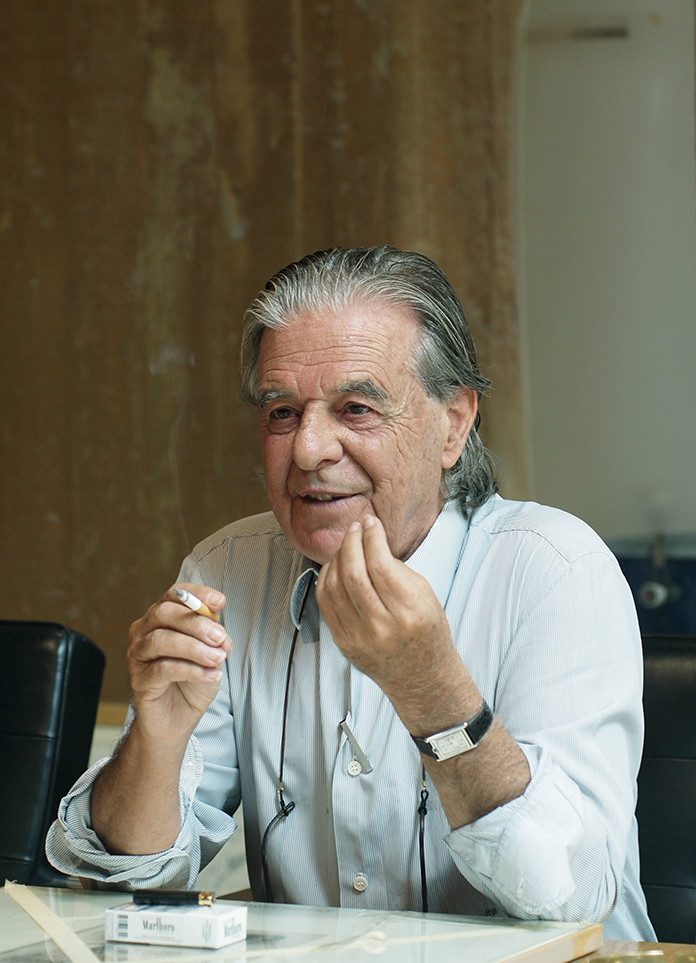Between the river and the sea, on the northern coast of Bahia, the Modular Bahia project proposes a contemporary tropical retreat, sensitive to the local territory and climate. Developed by UNA barbara e valentim, the project combines industrialized solutions with bioclimatic strategies - responding precisely to environmental conditions and the desire for a more landscape-integrated occupation.
Built on a peninsula, the house is divided into three independent sectors, separated by open pathos. This spatial organization accommodates the coexistence of different groups, respecting their rhythms and degrees of privacy. Along the circulation axis, the spaces connect fluidly, alternating moments of introspection and gathering, with views that open at times to the sea, to the river, or to the surrounding forest.
The interiors feature exposed wood on walls and ceilings. Large glass panels, shaded and protected by wide eaves, visually integrate the house with the stunning surrounding landscape. Broad wooden decks extend the indoor flooring to verandas, open terraces, and paths that connect the various modules of the house.
